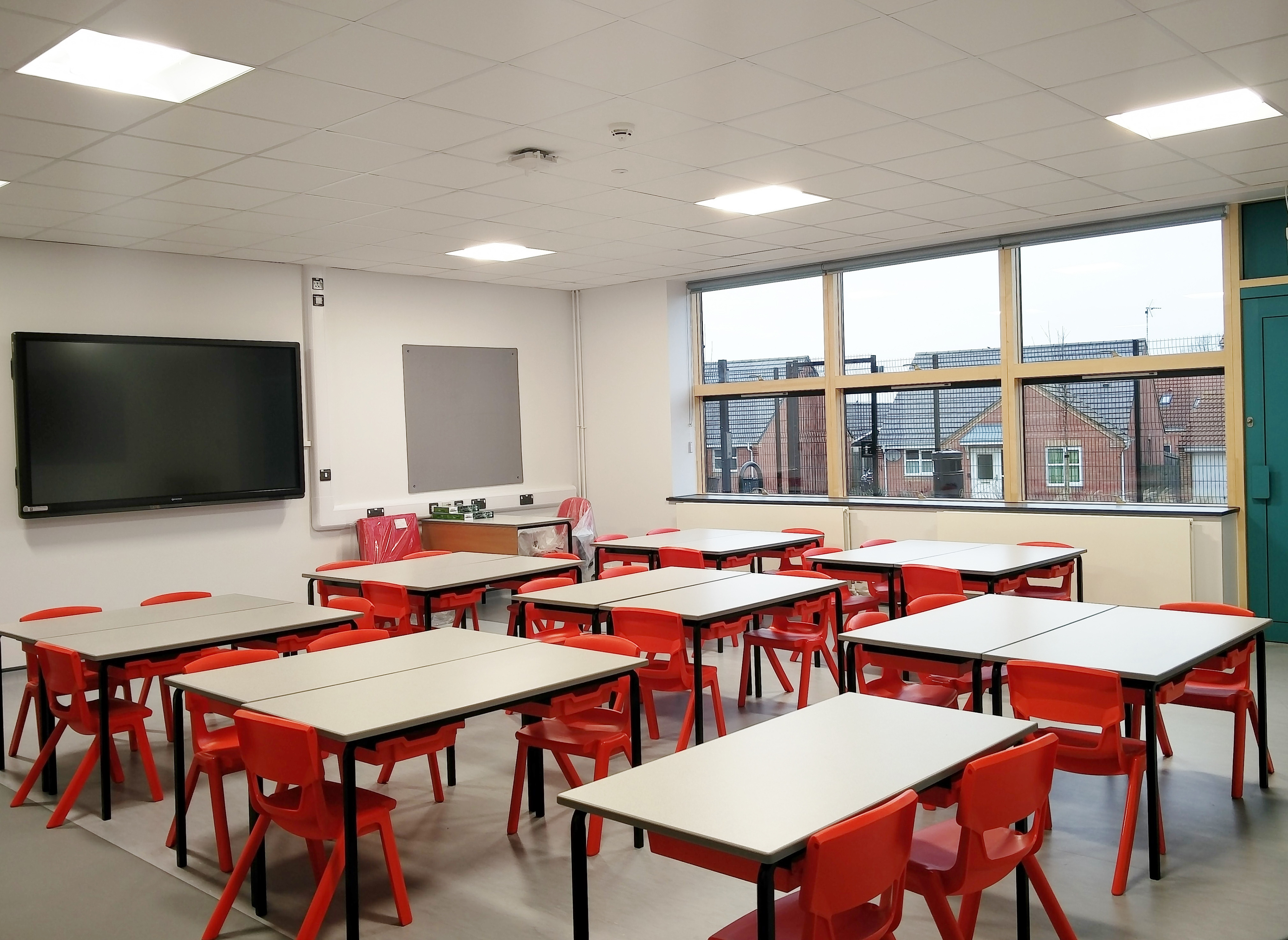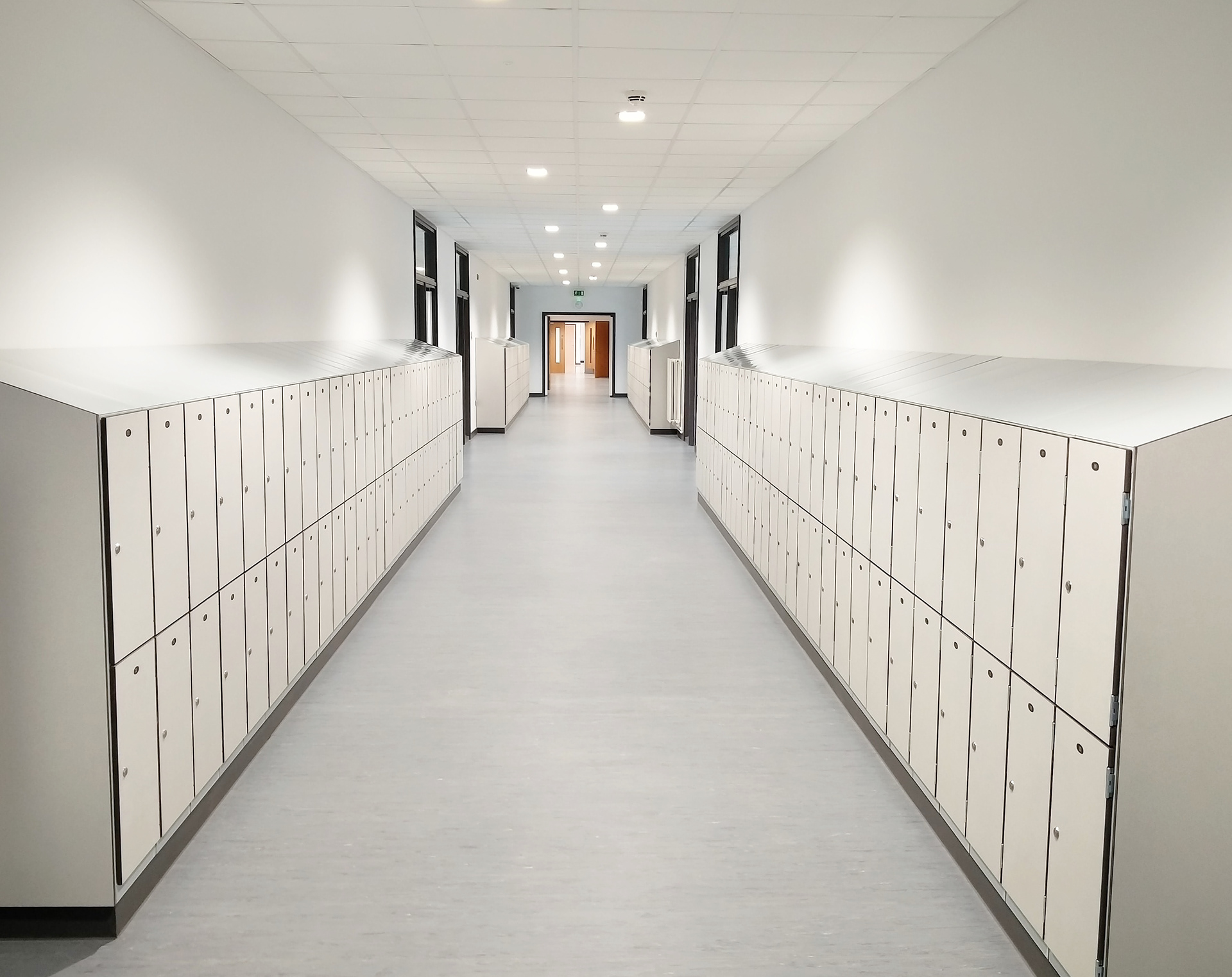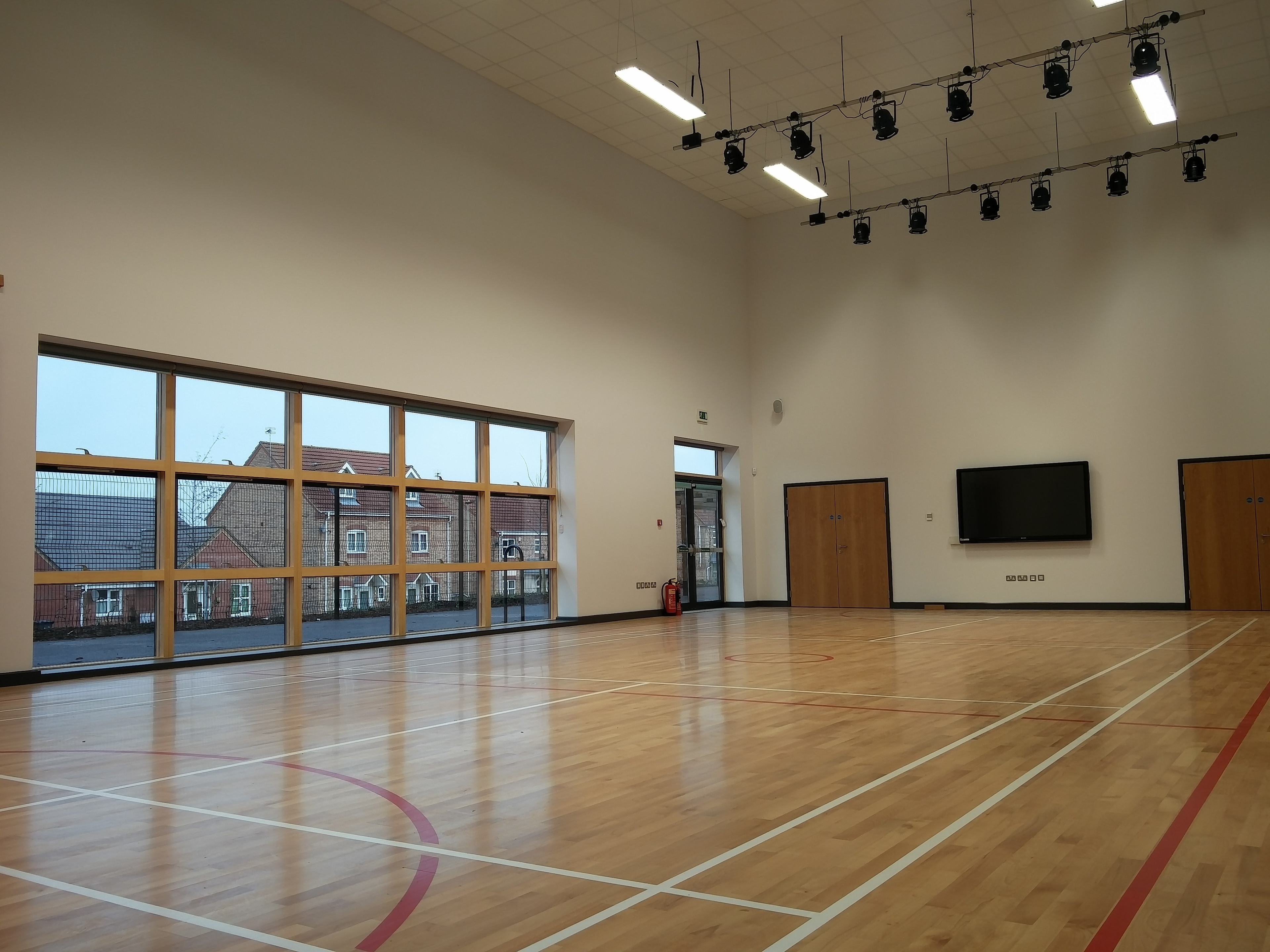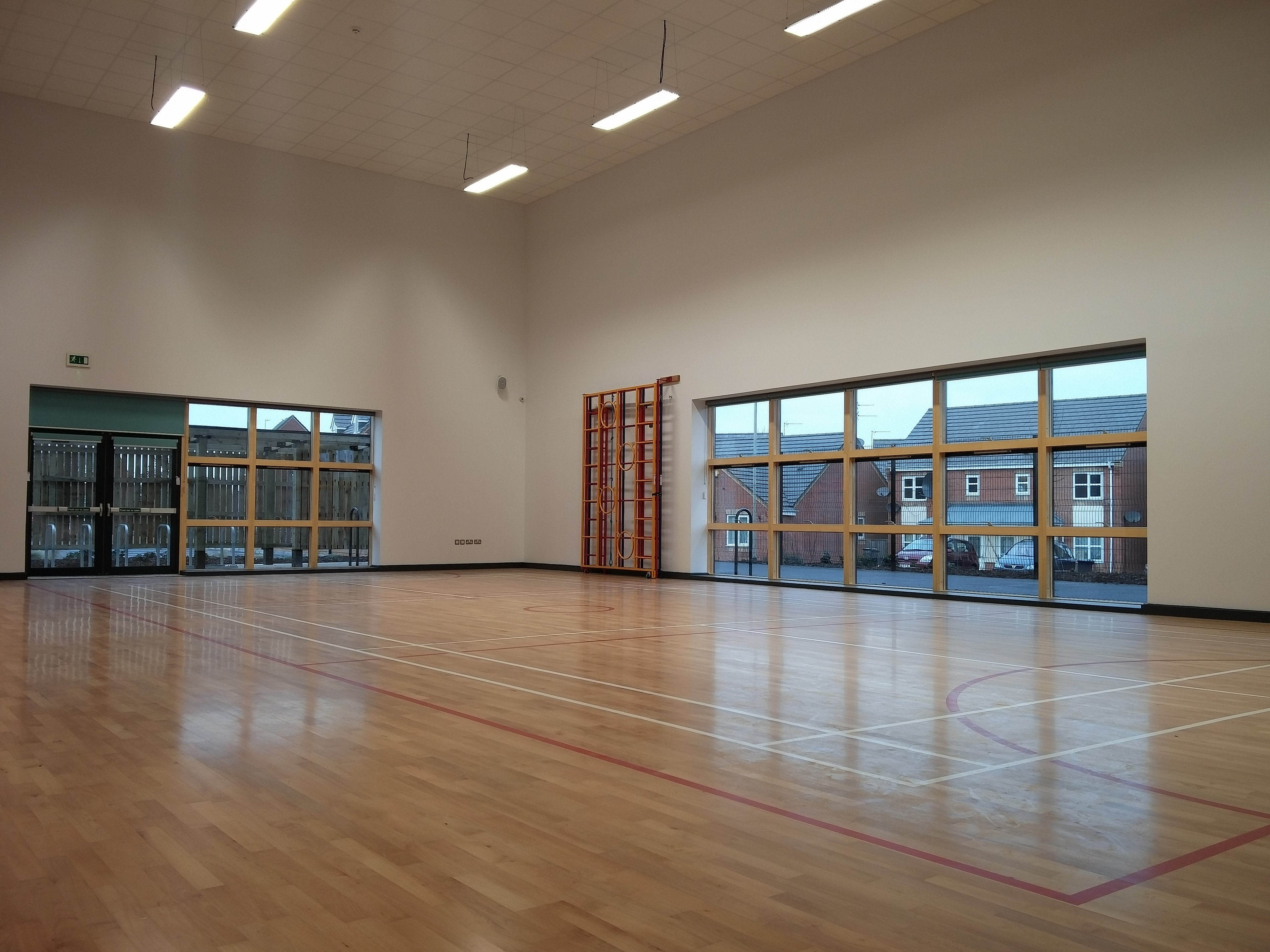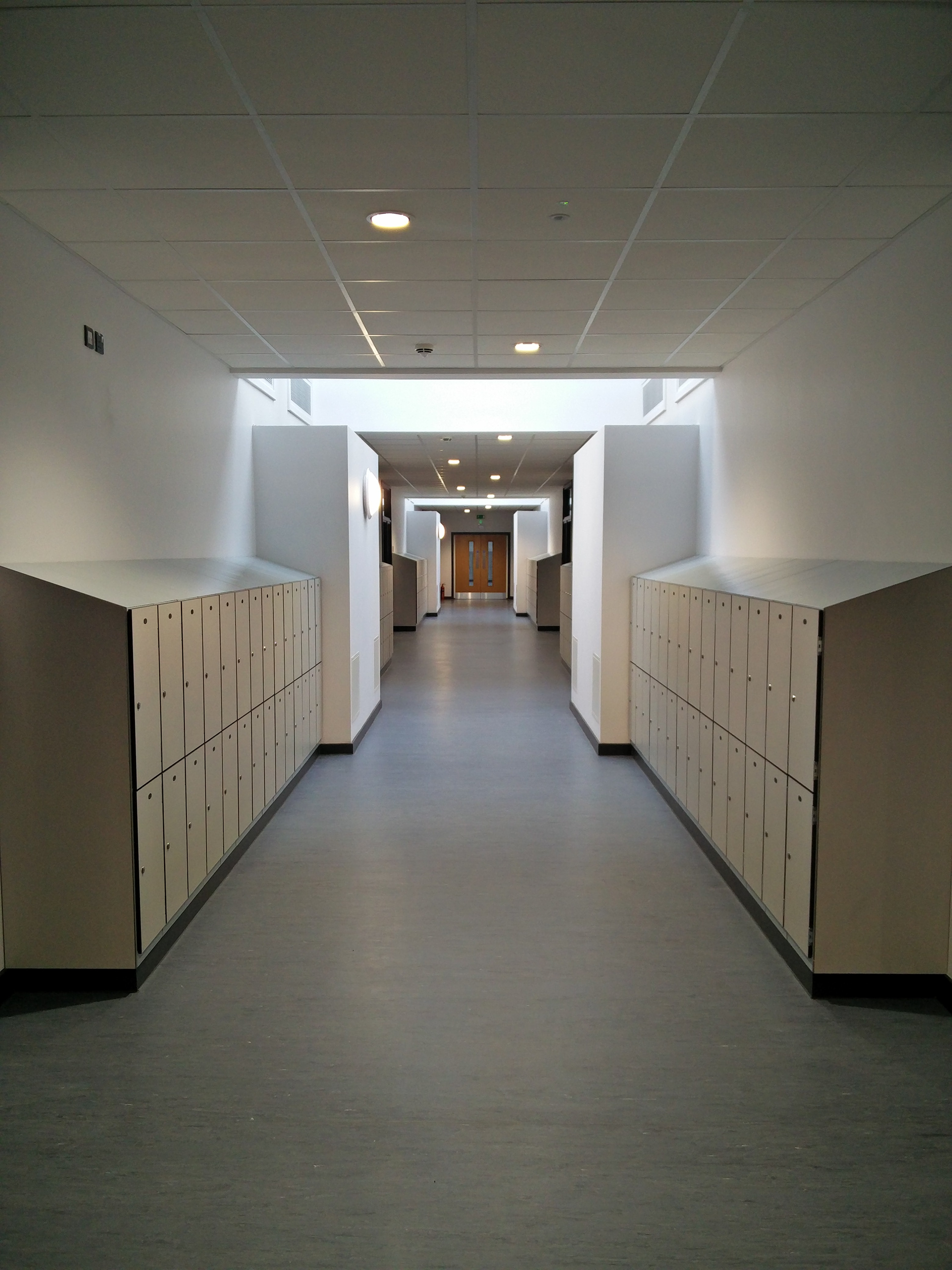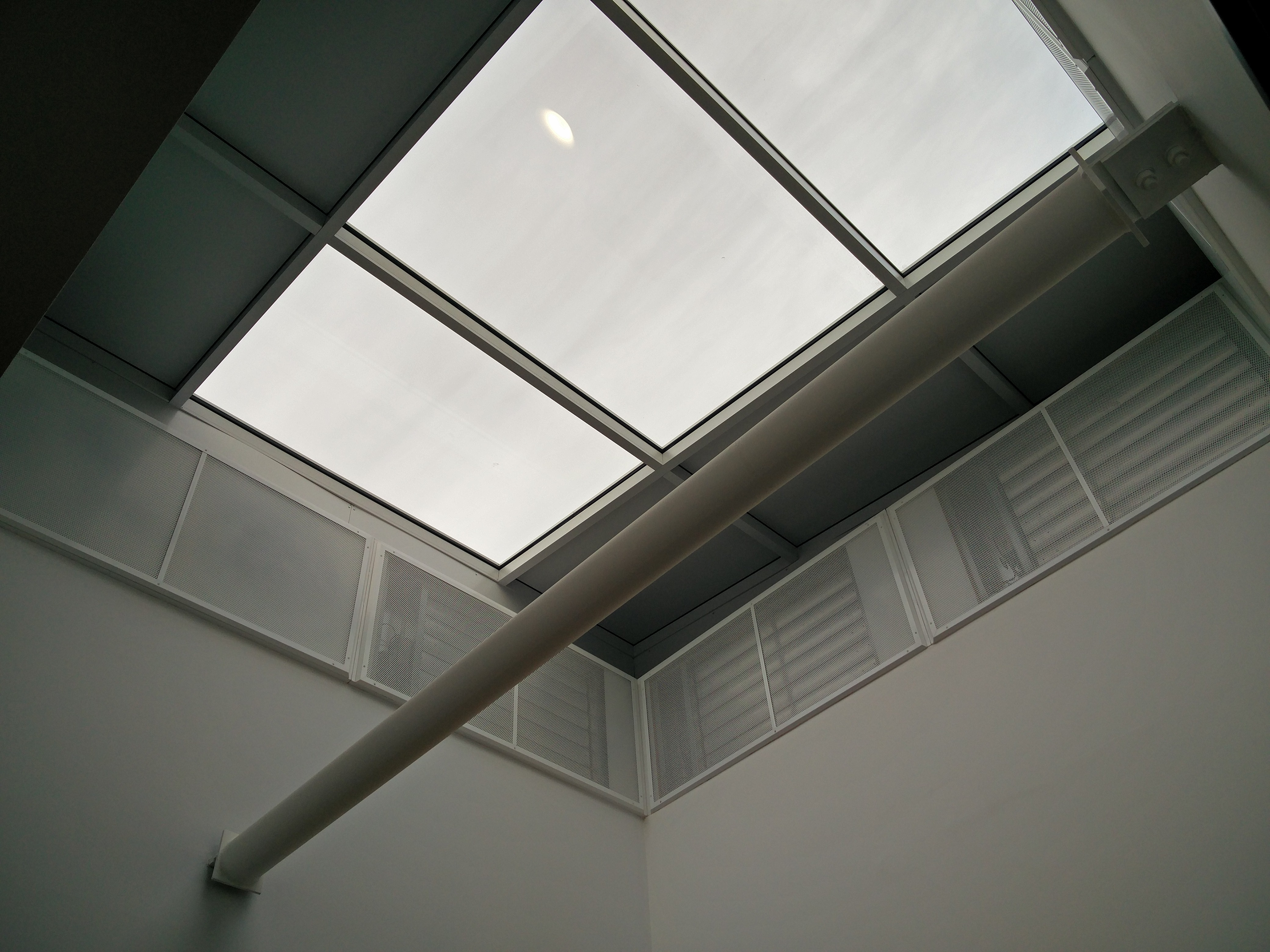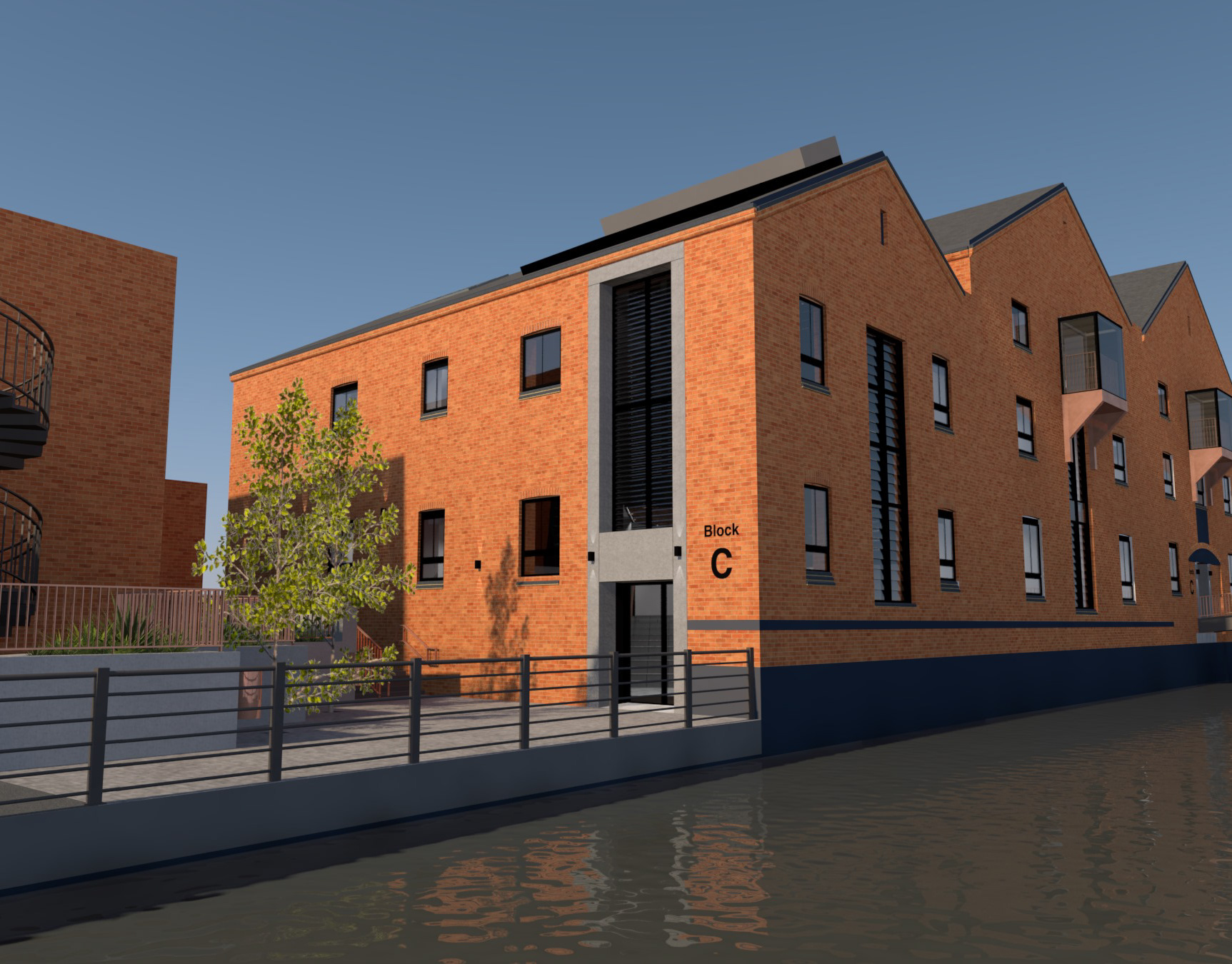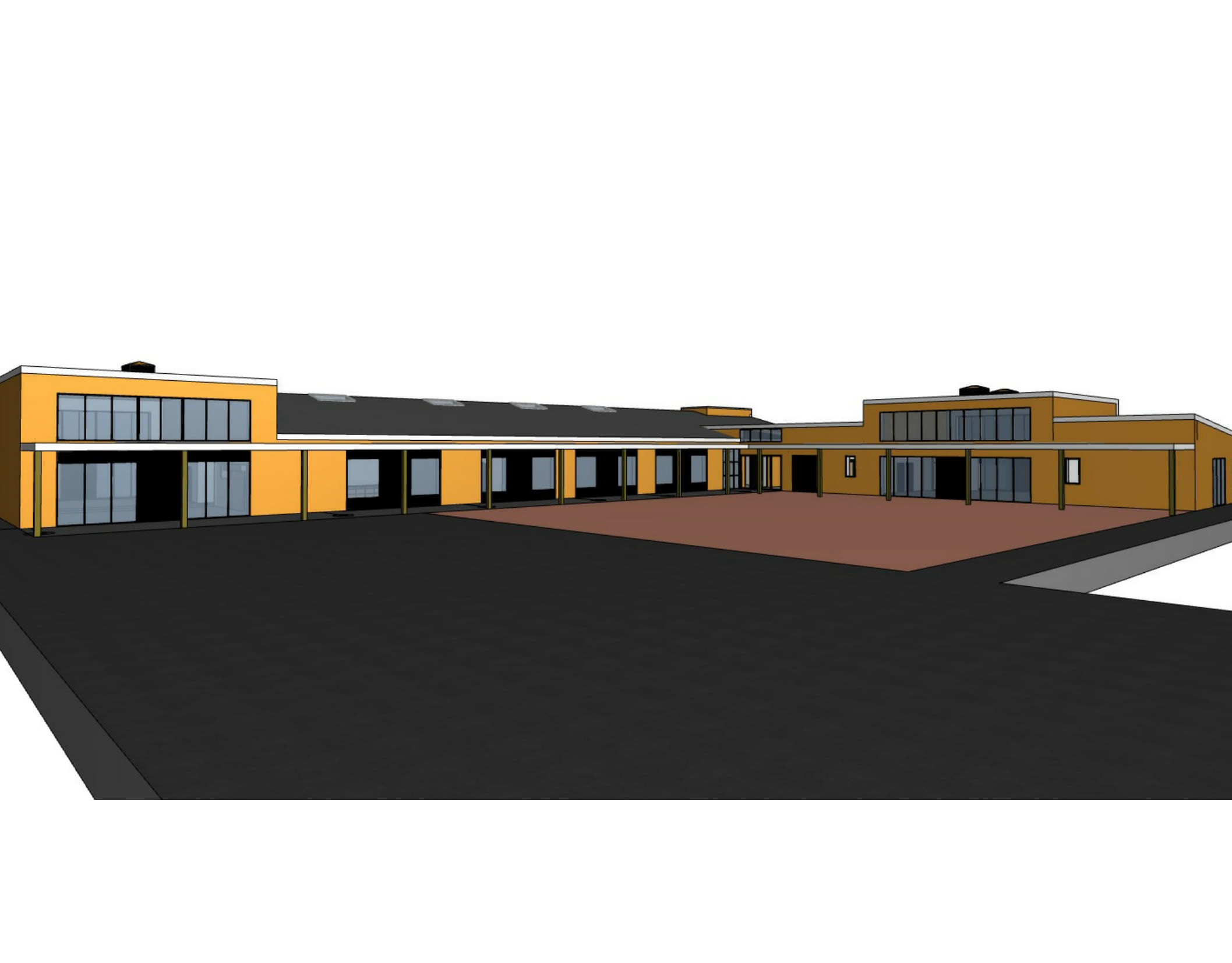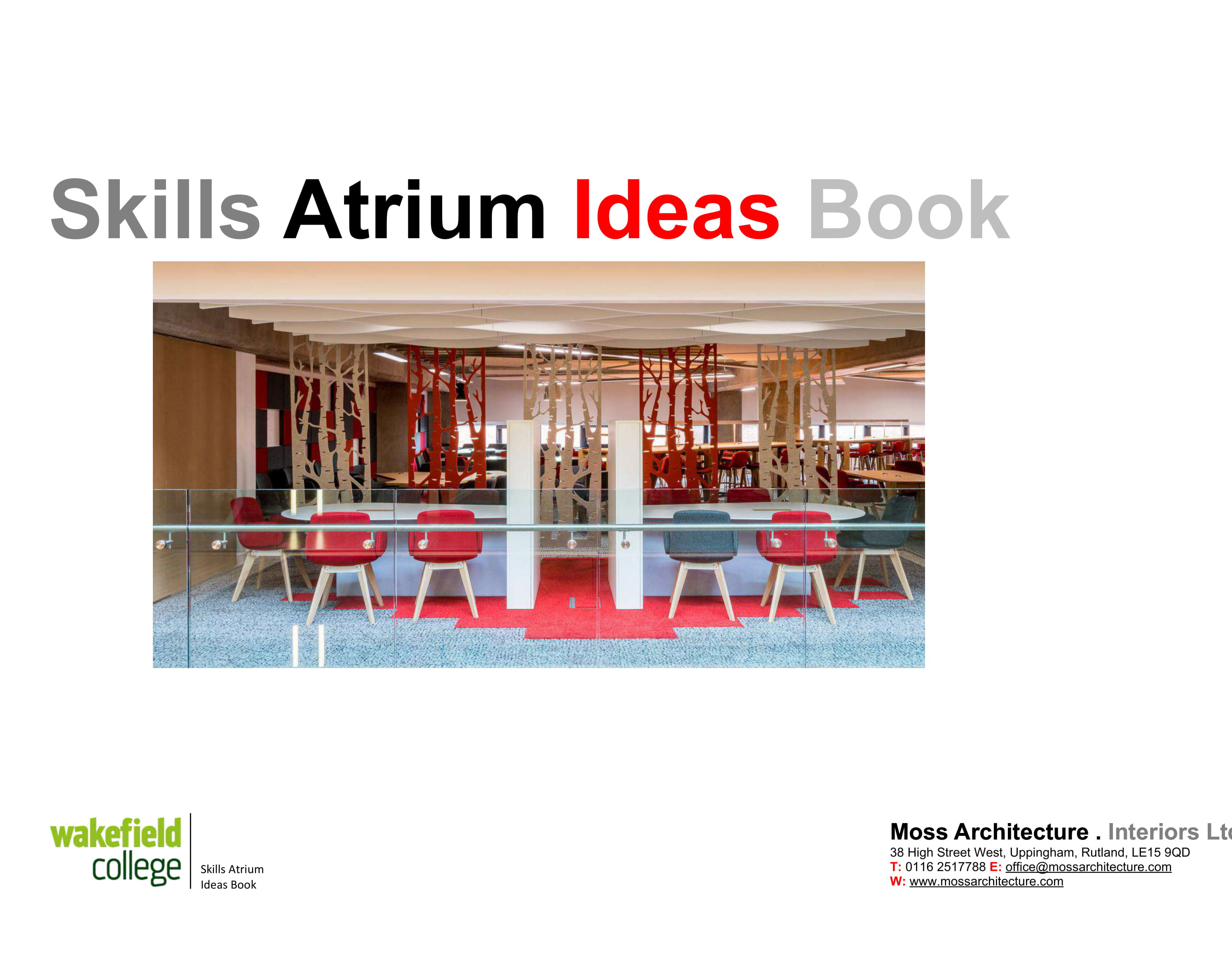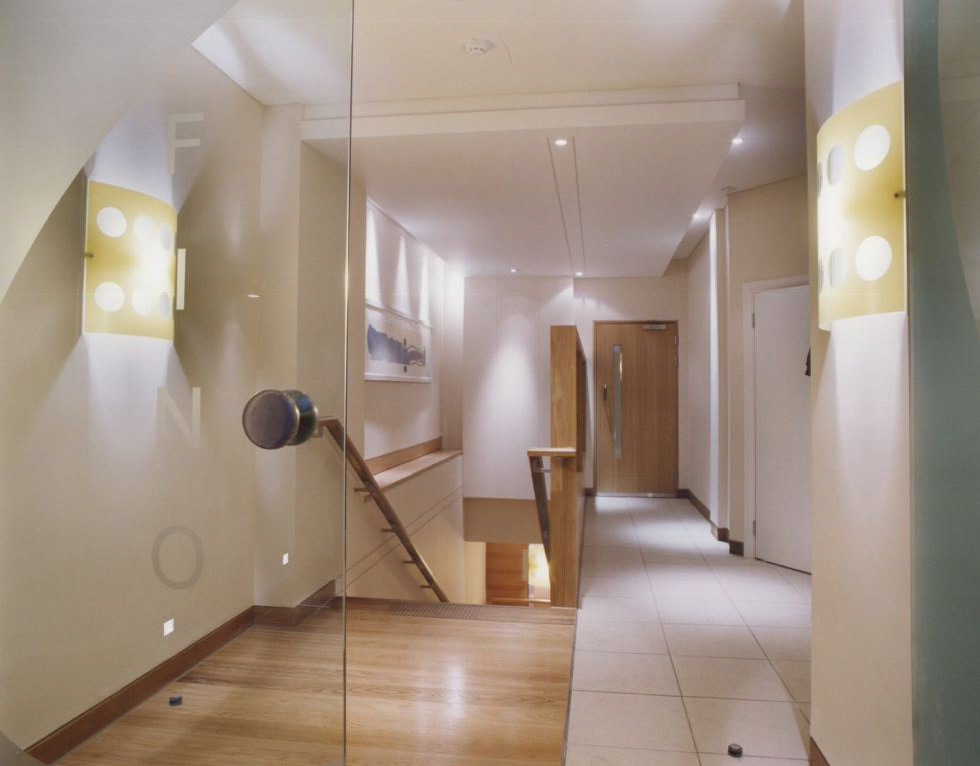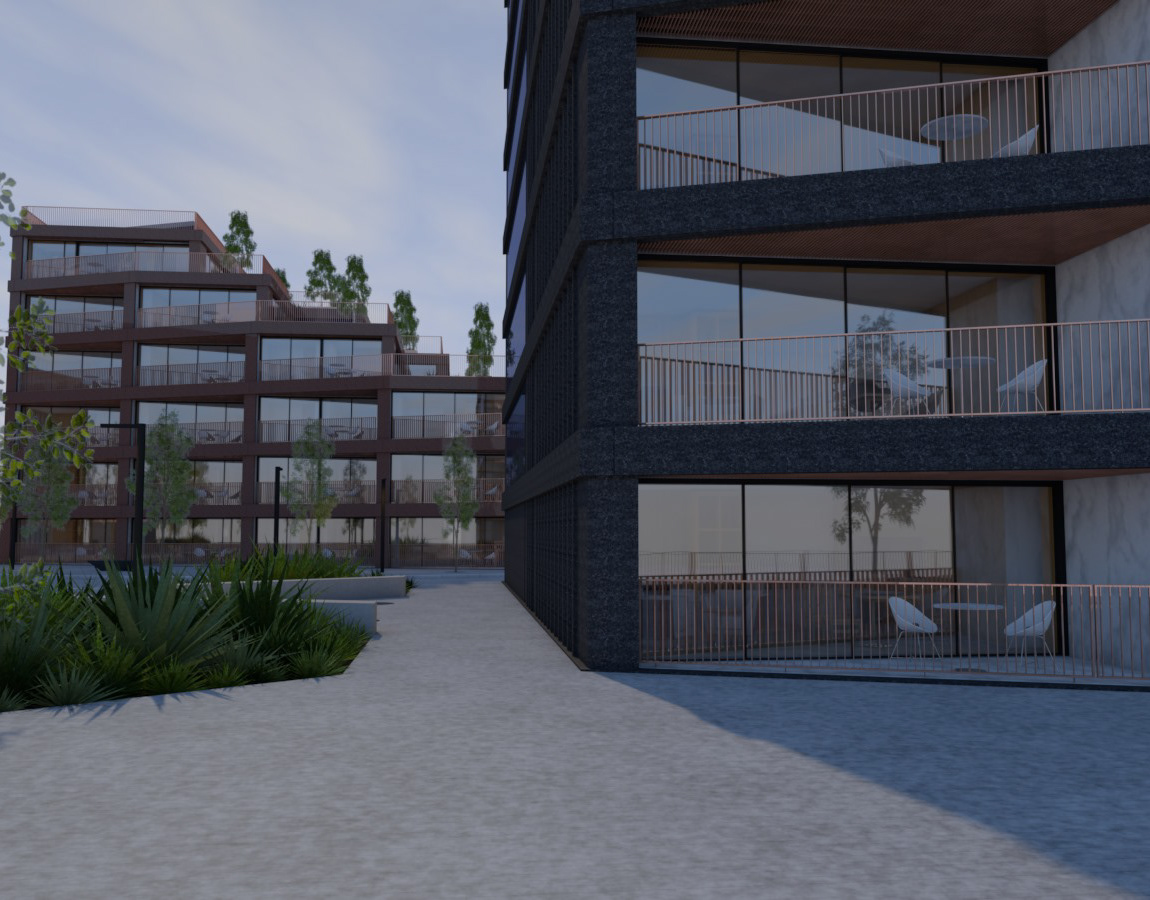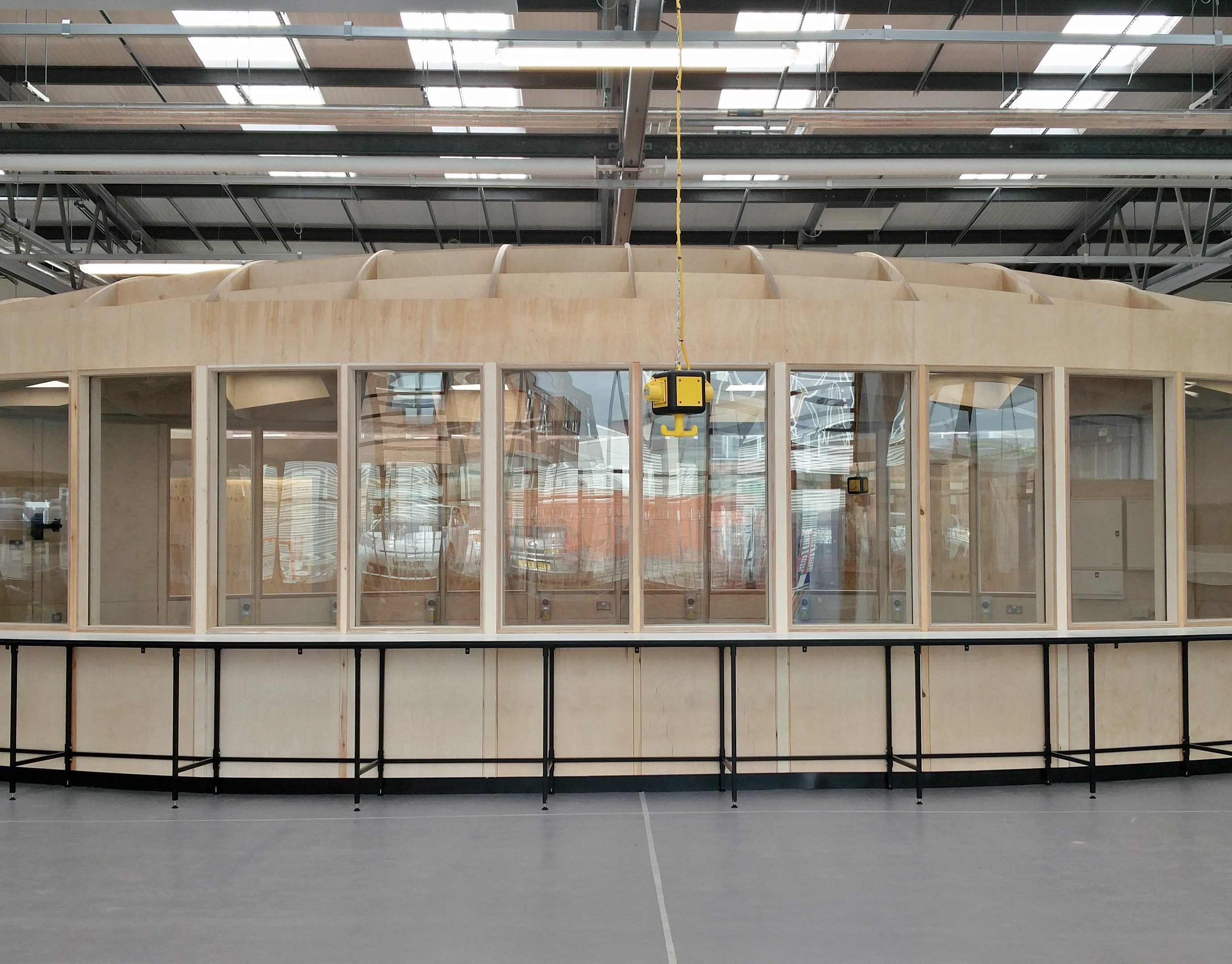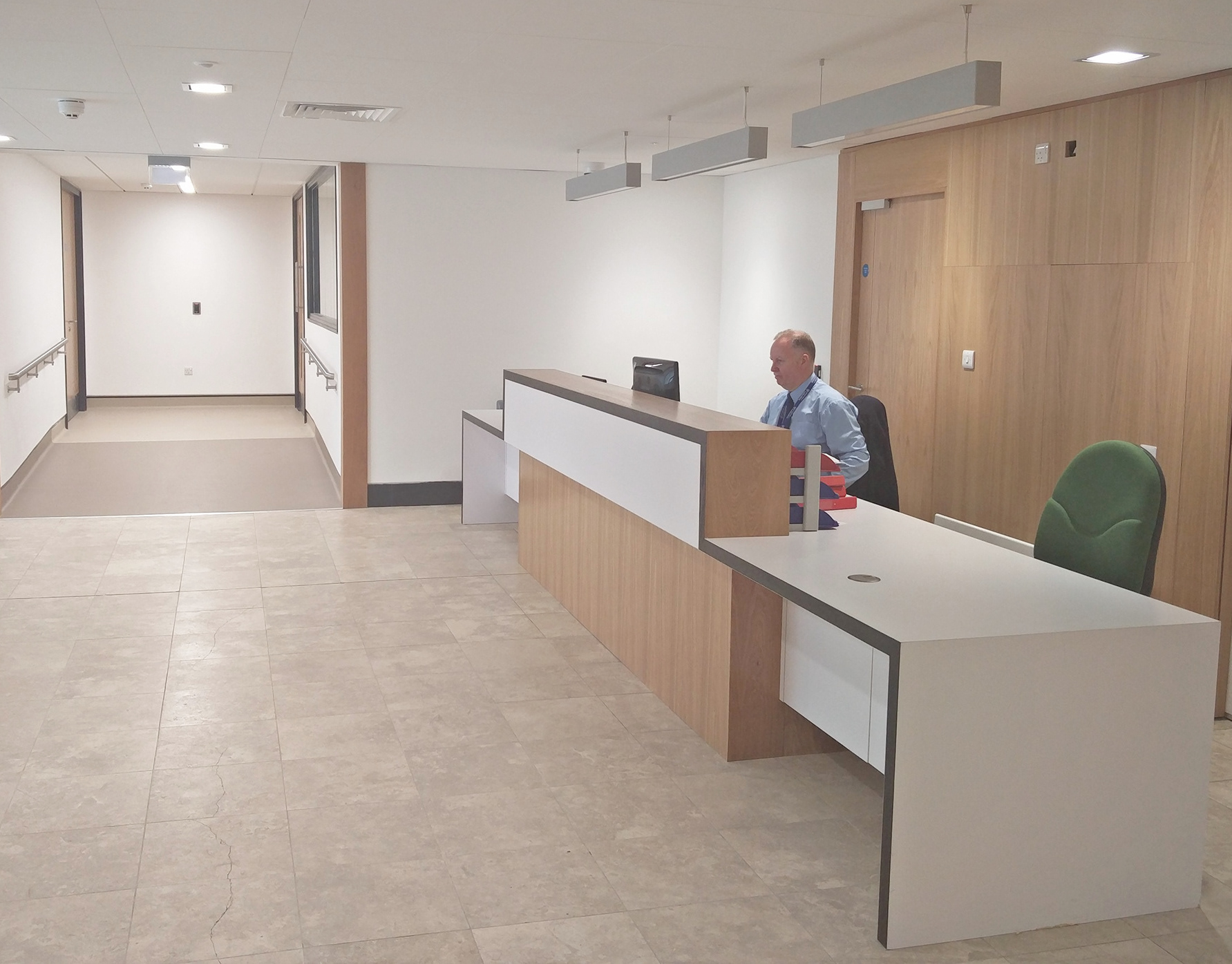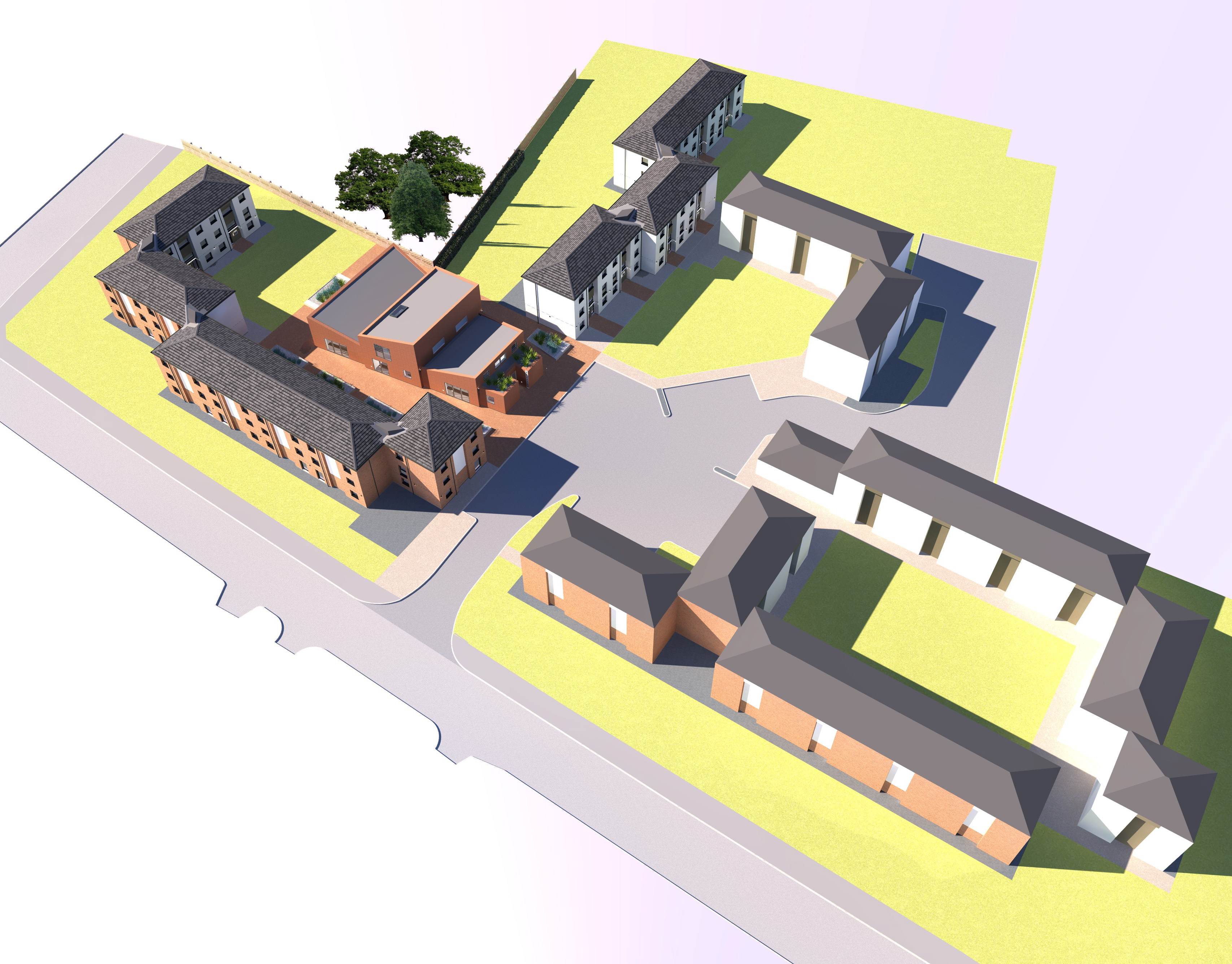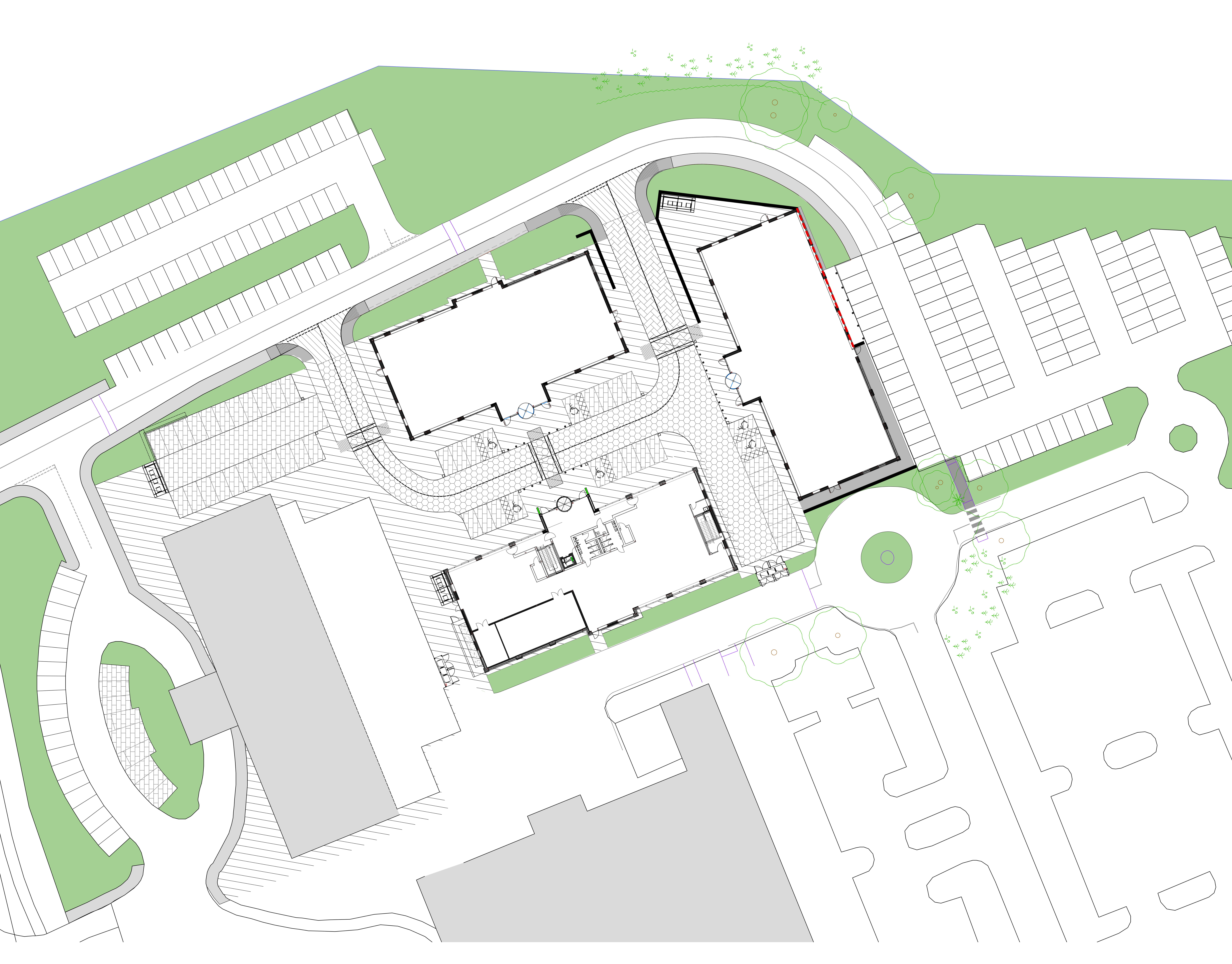Junior School
Responsibilities
Moss Architecture . Interiors Ltd were commissioned as lead designers and consultants along with their multidisciplinary subconsultant engineering design team, by G.F. Tomlinson Ltd, design and build contractors, to deliver full multidisciplinary design services for a new build sixteen classroom Junior school in Kestrels Fields, Leicester, comprising part of a suite of design and build tenders for Leicester City Council that included the extension and redevelopment of the separate infant school site also designed by Moss.
Background
The school building comprises 16 classrooms set over two storeys with support facilities including Hall, Kitchen, WC accommodation and staff facilities, along with car parking, external play areas, sports field and MUGA. Environmental consideration include delivering low energy usage and local authority renewables compliance through photovoltaic panel roof arrays, passive ventilation and super insulation. The site was developed with a new SUDs drainage scheme including three levels of filtration. A cohesive multidisciplinary design proposal was delivered through a competitive tender process, to include proposals for approach to the planning application. A critical aspect towards the project award included our proposals for key stage engagement forums consulting with local residents and lobby groups. Working collaboratively to develop sympathetic design solutions, contributing widely to the success of the scheme in gaining supported planning status.
Requirements
The design proposals were taken through an early engagement process with planners including presentation and design review with local residents and lobby groups. Residents’ concerns included building scale and impact to amenity, traffic and congestion at drop off and pick up times, noise and privacy. The design addressed these concerns through the undertaking traffic studies, assessing the existing roads infrastructure and finding local and manageable drop off and pick up alternatives. Solutions included developing bus routes with LCC and the establishment of an agreement with Tesco to use the adjacent local store car park as a car and bus drop off and pick up point. This included provision of new guided pathways provided for the children to the school site, reducing traffic load at the school and in the residential streets to the minimum. These solutions were supported by the residents and school teaching staff. This project benefitted widely through genuinely engaging and collaborating with local residents from the outset of design, sharing proposals with the local residents groups. Delivering community focused sustainable design solutions for the people of Kestrel Fields.
Infant School
Responsibilities
Moss were commissioned through a SCAPE appointment to work with Leicester City Council as lead consultants and architectural and interior designers to develop the school design and tender information for construction of the school through an open tender design and build procurement.
Background
Kestrels’ Field Primary School comprised a two form entry school and, through expansion, was required to become a four form entry school. The junior school has been relocated in to the new site to enable the expansion of the infant provision on the site and properly cater for the junior provision in a purpose designed annexe school described. Through this relocation, space is created within the existing infant school site allowing reconfiguration of the existing building along with a new extension, to include classrooms and support facilities suitable for a four form entry infant school.
Requirements
The extended and reconfigured school accommodation comprises the following:
Year One Area: A reconfigured and extended east wing of the school to create a Year Two area to include a total of 4 new classrooms of 63m² each, plus a new Studio of 45m². WC accommodation is extended and improved along with storage to cater for a four classroom provision.
Hall: The existing pyramid roofed hall required improving to make better use of natural light and improve ventilation through introduction of ventilating roof lights and natural ventilation louvers at low level. The Studio area behind the Hall is to be used as an overflow area to the Hall. Daylight provision and ventilation are developed to improve flexibility in use to include group teaching and dining hall activities.
Year Two Area: The interiors arrangements are fully re-planned to include improved class room layouts and expanded WC provision. The toilet areas for this age group were designed to be accessed from the classrooms.
Junior School Site & layout
Site
The site comprises of a steeply sloping hillside bordered to three sides by new residential estate development, and to the North by a Tesco superstore and retail park located centrally within the Kestrel Fields area of Leicester. The site arrangement developed into two platforms comprising lower level for the building and carparking and play areas and upper level for the sports pitch and MUGA. The site layout was conceptualised in various arrangements reviewed and amended with residents. All proposals were presented in 3D models to ensure understanding by the widest audience.
Due to the gradient of the site an extensive ground modelling review was undertaken to develop the most efficient cut and fill and ground retaining solution. Off siting was reduced to the minimum made possible by using geo membrane earth retaining structures for the 7m high central cut used to establish the earth platforms, enabling most of the ground to be retained on site developing tendering efficiencies. External stairs are included to the gradient for direct access with ramped inclined paving included around the edge of the site to enable level access. Grass cutting and maintenance access are provided to both upper and lower levels A land scape scheme was developed comprising of dense screen tree planting and shrub layouts. The council required a security fence to be provided to the entire perimeter of the site, albeit this was not wanted by the local residents due to appearance, made necessary through safeguarding requirements of LCC. The tree screen planting is grouped to considers this and adjacent residence privacy aspects with trees maturing to soften the view.
Layout
The building plan arrangement responds to practicalities comprising extra wide central corridors that include lockers and the natural ventilation stacks. Classrooms, support and staff areas are arranged to each side of the corridor delivering a rectangular plan; with eight class rooms at ground floor and eight at first floor. The hall double volume is provided to one end. Developing an easily navigable, school layout that minimises circulation and improves security and safeguarding enabling simple construction. High levels of natural light establish a feeling of wellbeing delivered through expansive external glazed screens. Internal glazed screens are strategically positioned to share day light through the interior. Stairs are provided at each end of the corridor with a disabled lift provided close to the entrance. WC accommodation is grouped centrally at each floor level. Rooms are regularised to a planning grid that simplifies the structural frame arrangement and drainage. Rooms may be interchanged in the grid to develop alternative layout arrangements. The design based on a plan and elevation planning grid enables modularisation of this school concept. We are currently developing a modular off site solution.





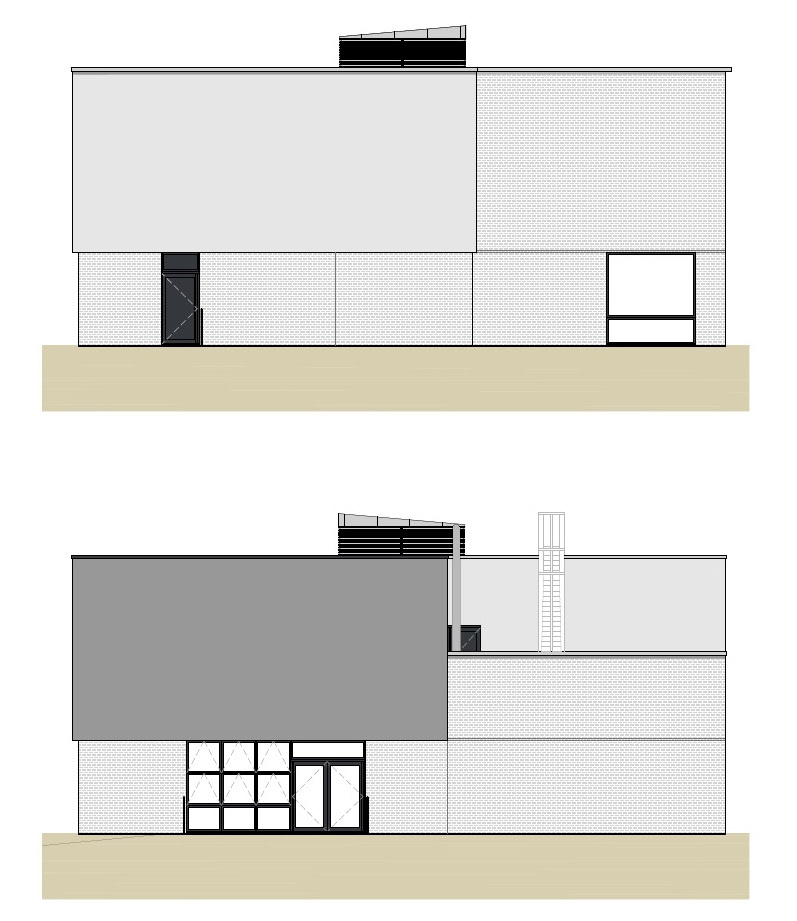



Infant School Site & Layout
Site
The external surfacing and play areas are increased in area. The mismatched array of paving and mixture of surface finished were removed and formed into a single surface layout with containerised planting to reduce maintenance and house-keeping. New surface water and SUDs drainage was installed to the site to accommodate the increased building and play surface areas along with adapted foul drainage to the re-planned and extended WC accommodation.
Layout
The new class room accommodation is developed as a ‘wrap around’ layout minimising circulation and new building footprint to minimise the loss of external play area. The extension building is highly insulated and makes use of actuated glazing at high and low level for ventilation and fresh air to improve comfort conditions and pupil / staff experience. The use of bay window and doors link the class room areas directly to the external play areas.

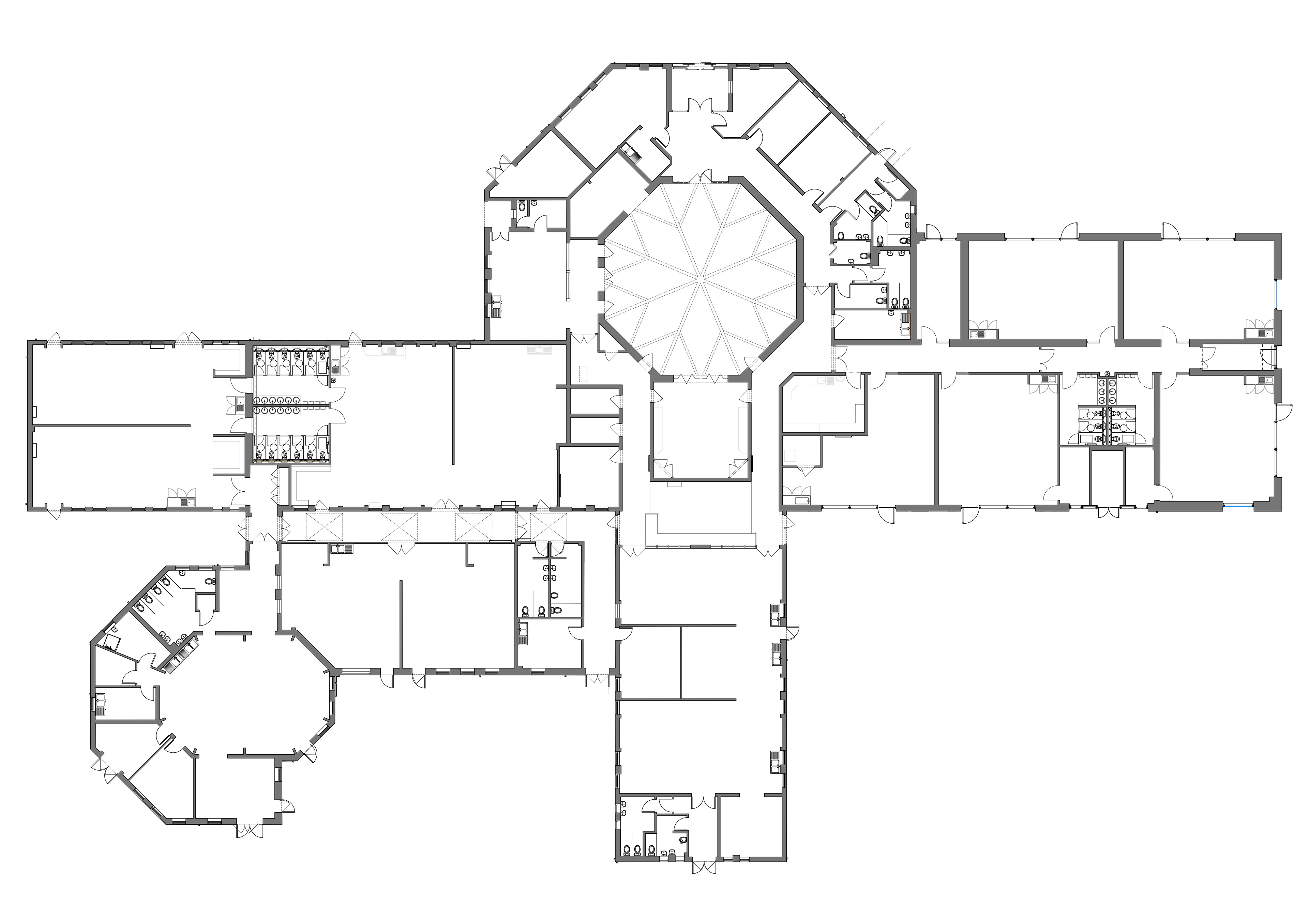
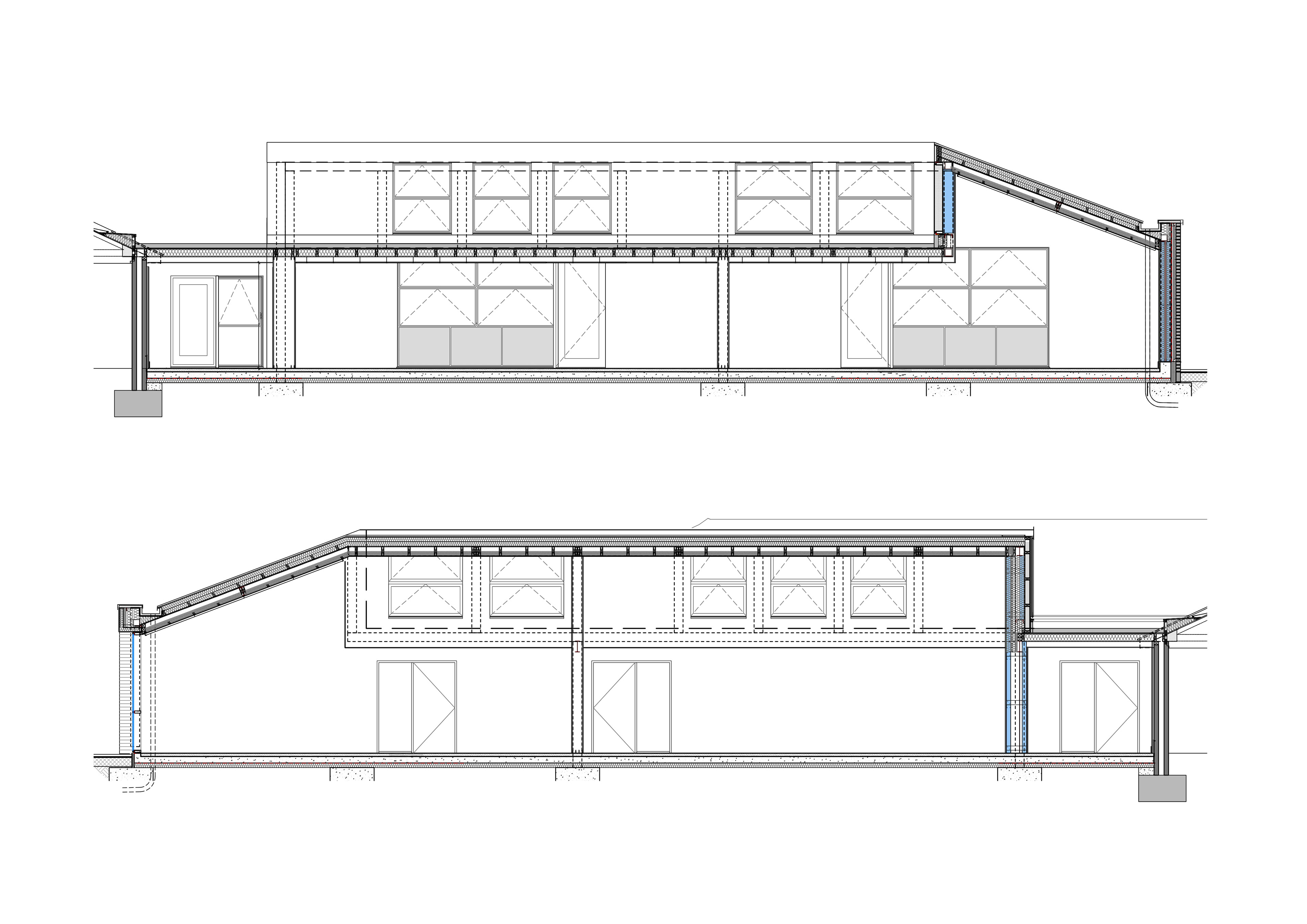
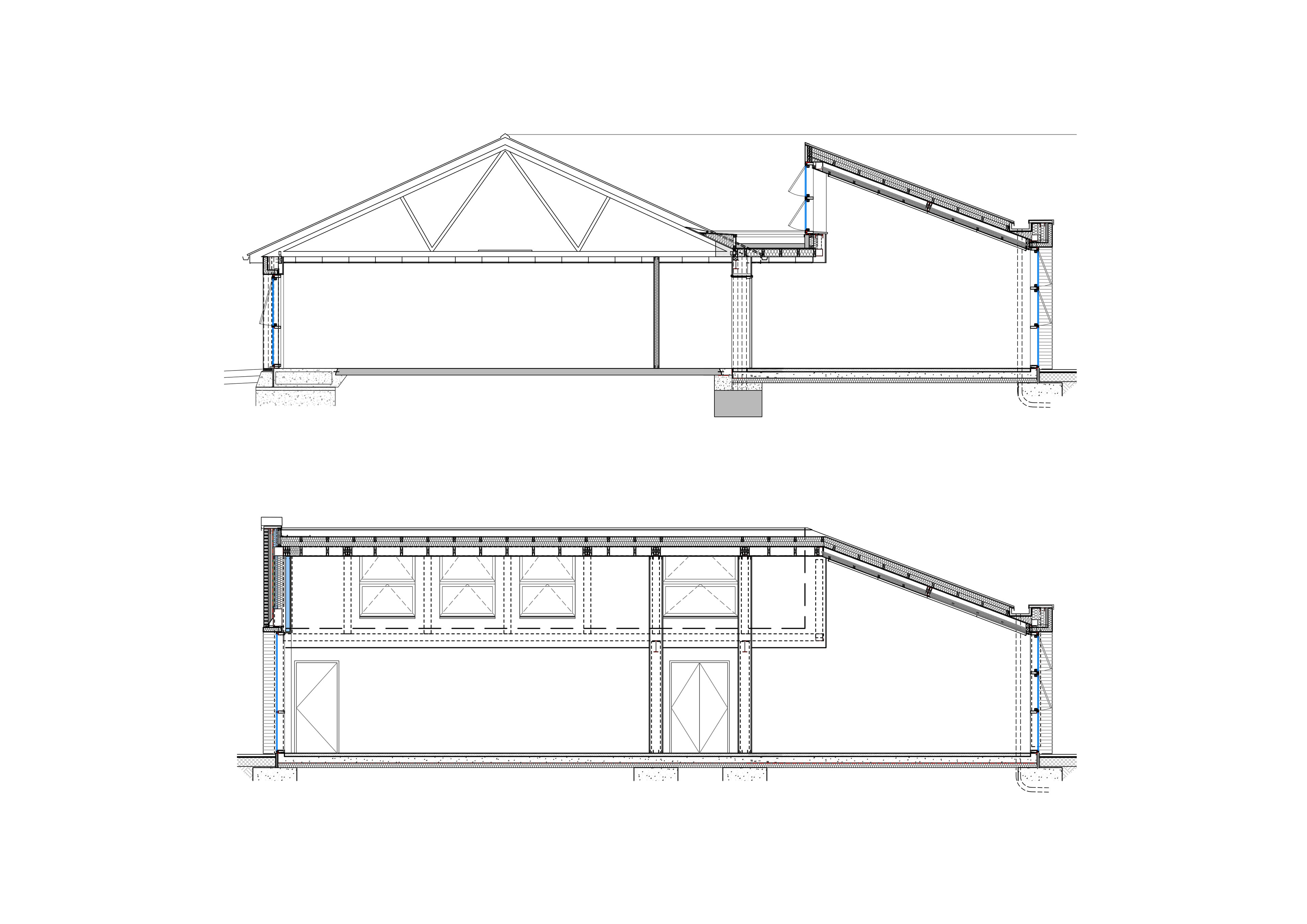
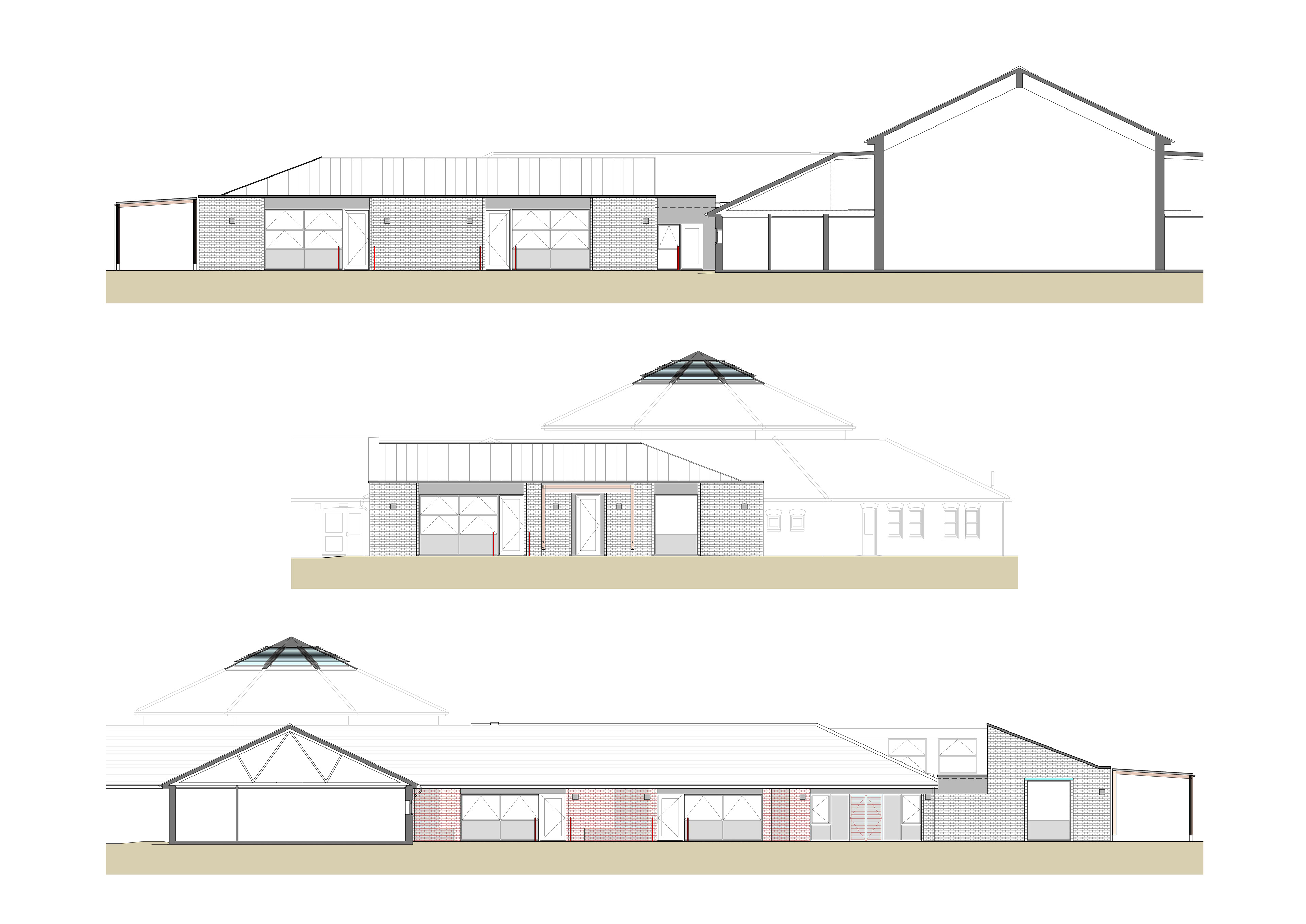

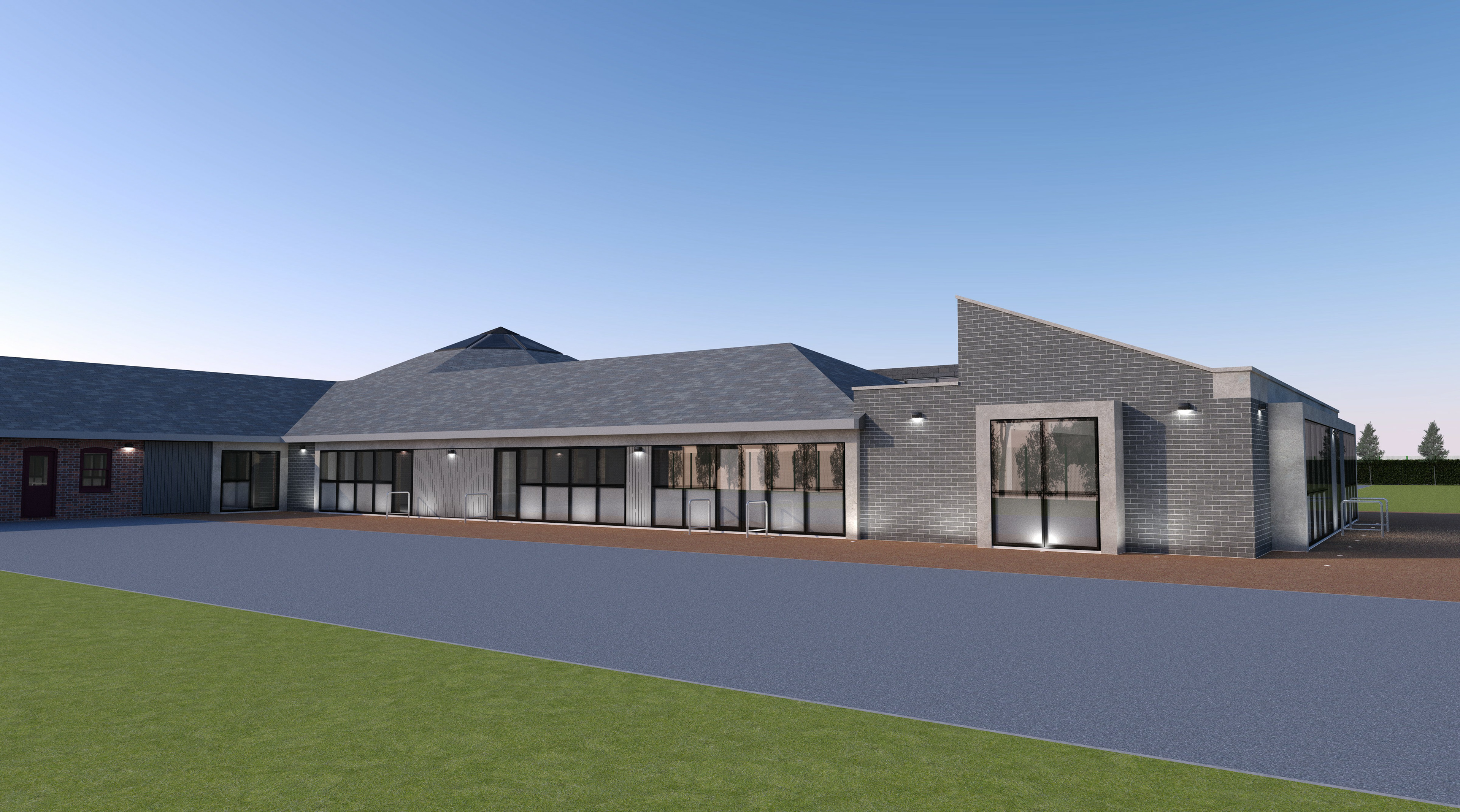
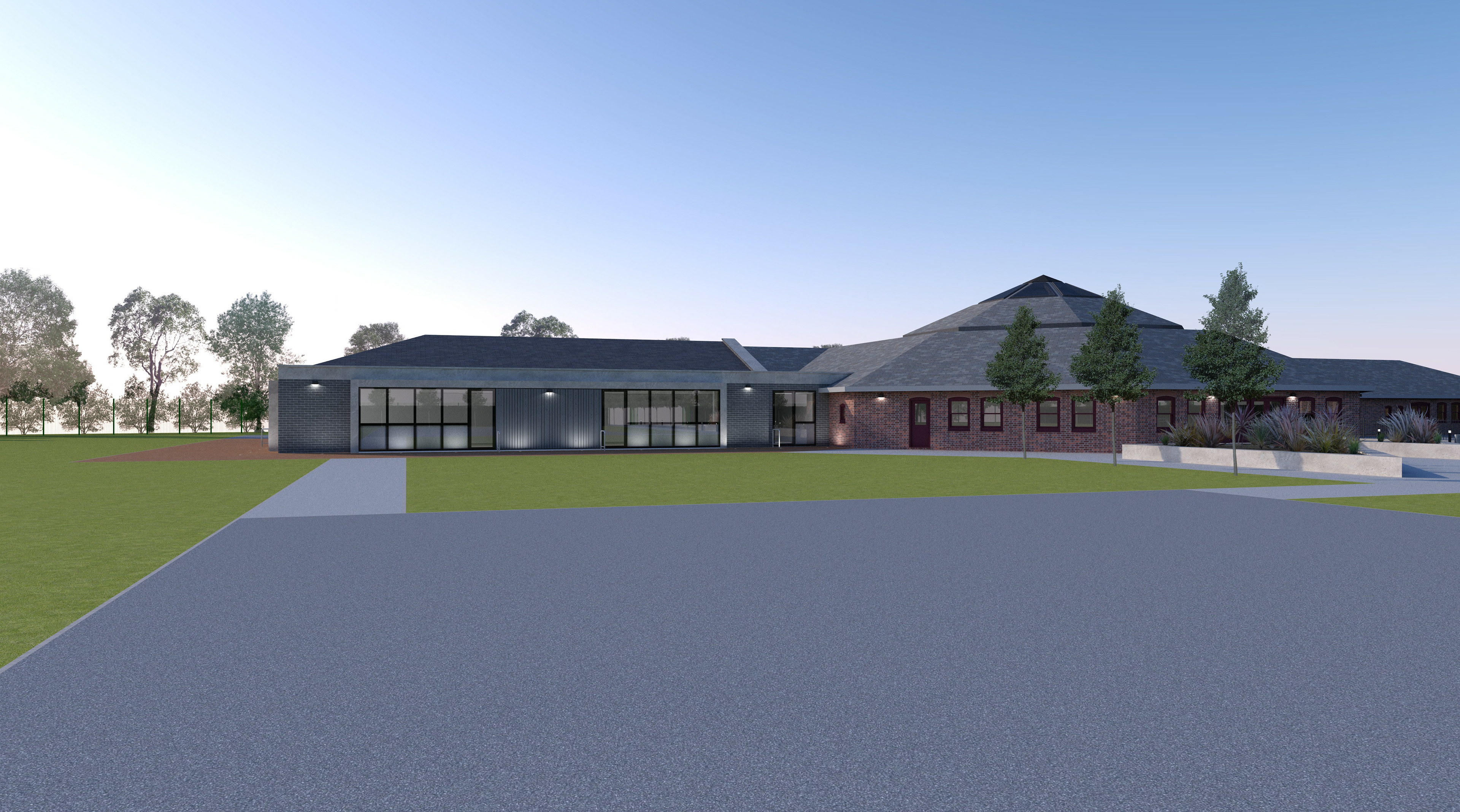
Construction
Foundations are provided as pad base and edge strip, with an insulated ground bearing concrete ground floor slab. Superstructure is provided as a regularised steel frame with first floor in in-situ cast concrete on Hollo-rib deck. The first floor includes for acoustic insulation and decking laid over. Fenestration and external walls comprise of Metsec lightweight steel frame with Sto render rainscreen and brick external cladding. Storey height thermally broken curtain wall screens with solar glazed argon filled sealed units and actuated vents combine to deliver daylight and fresh air into classrooms. The walls are super insulated with rockwool.
The roof comprises of a profiled steel deck to low falls with built up insulation and bonded polymeric membrane finish. Roof finish walkways are tiled reinforced to provide access paths to roof mounted photovoltaic panels and the actuated passive ventilation unit louvers. The roof is super insulated to improved performance. Partitions are provided throughout in metal stud, spanning deck to deck finished in differing boarding as location requires, and skim coat plaster. Ceilings are provided in combi acoustic improved suspended ceiling tiles providing class ‘A’ acoustic absorption.

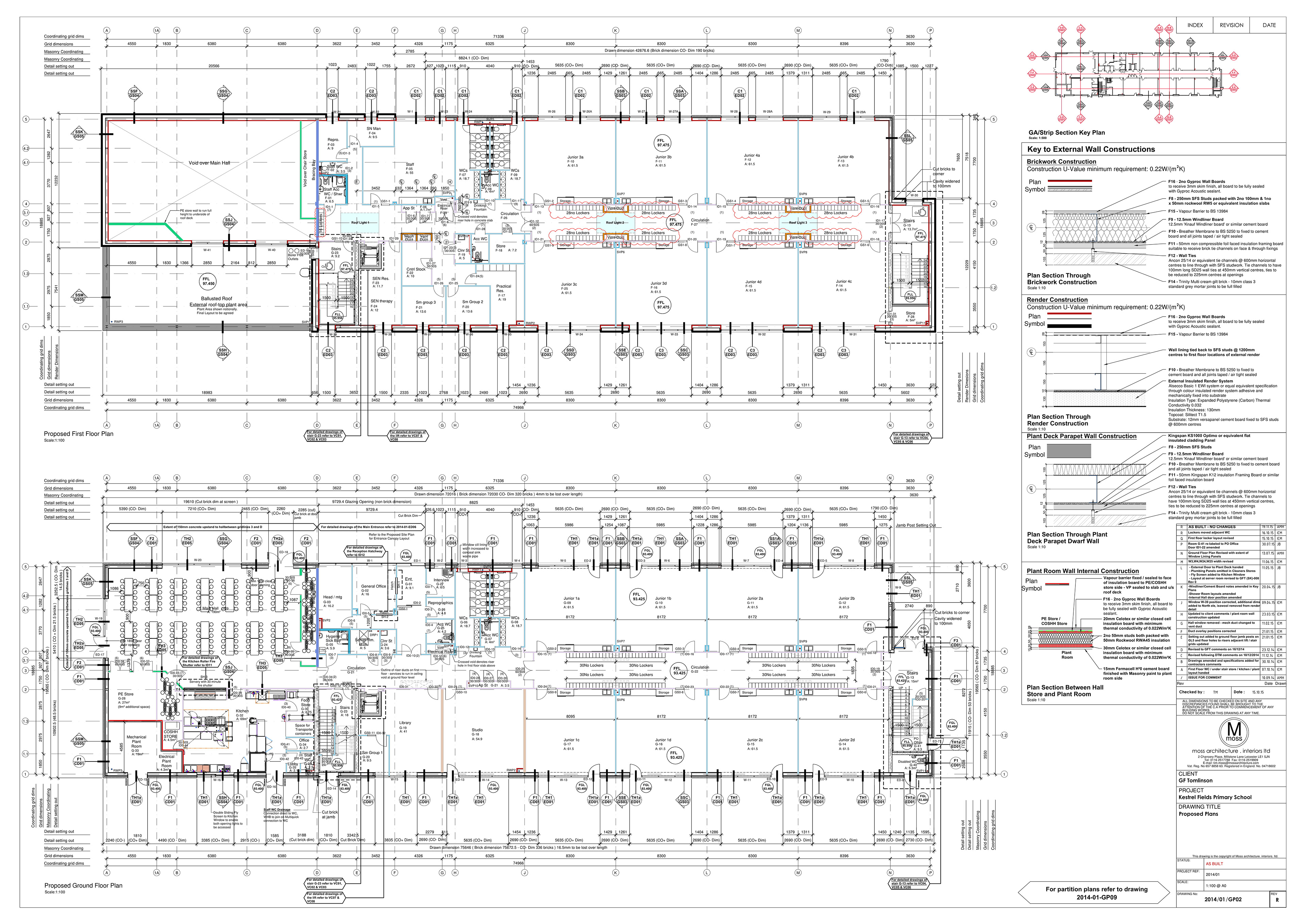
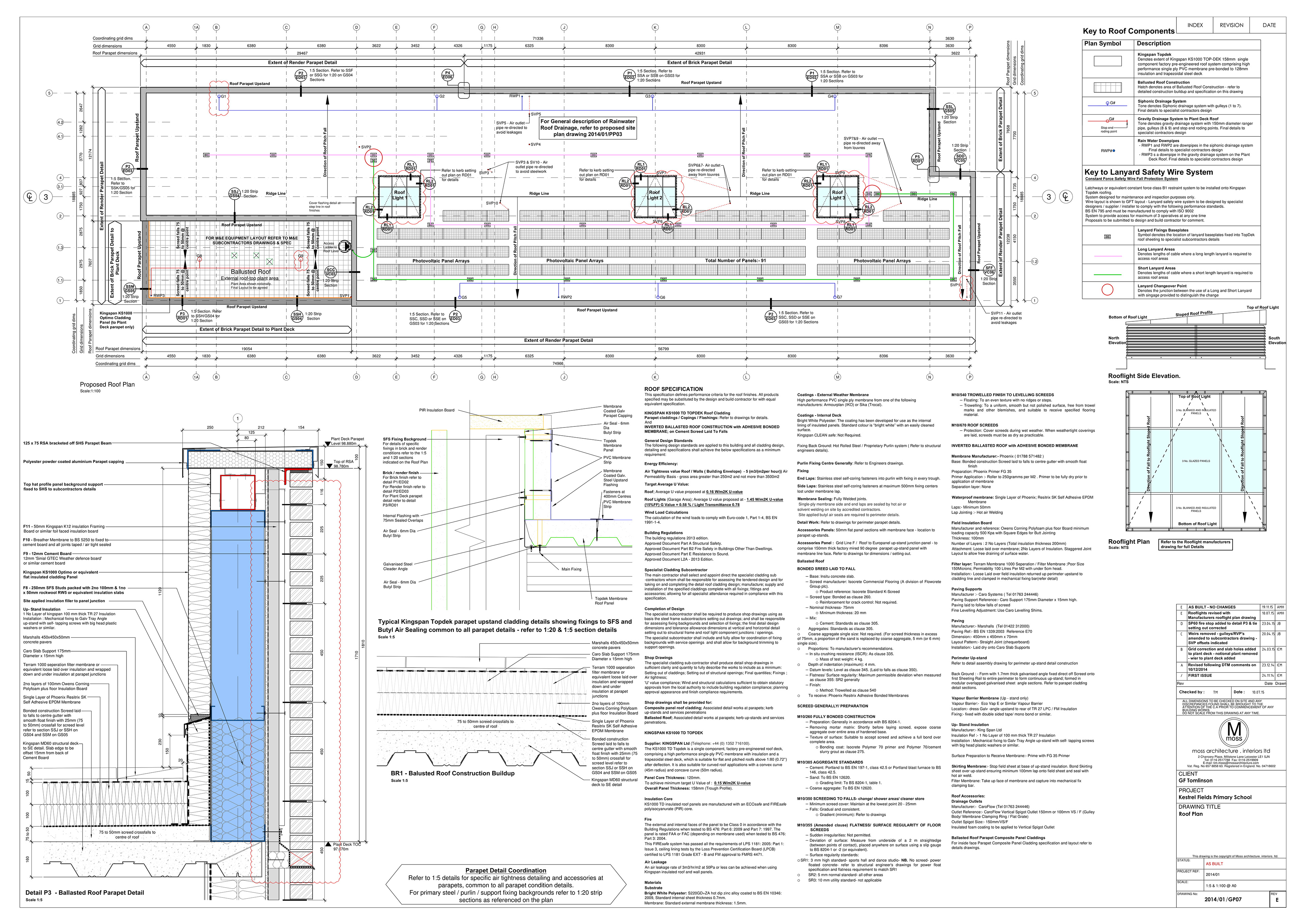
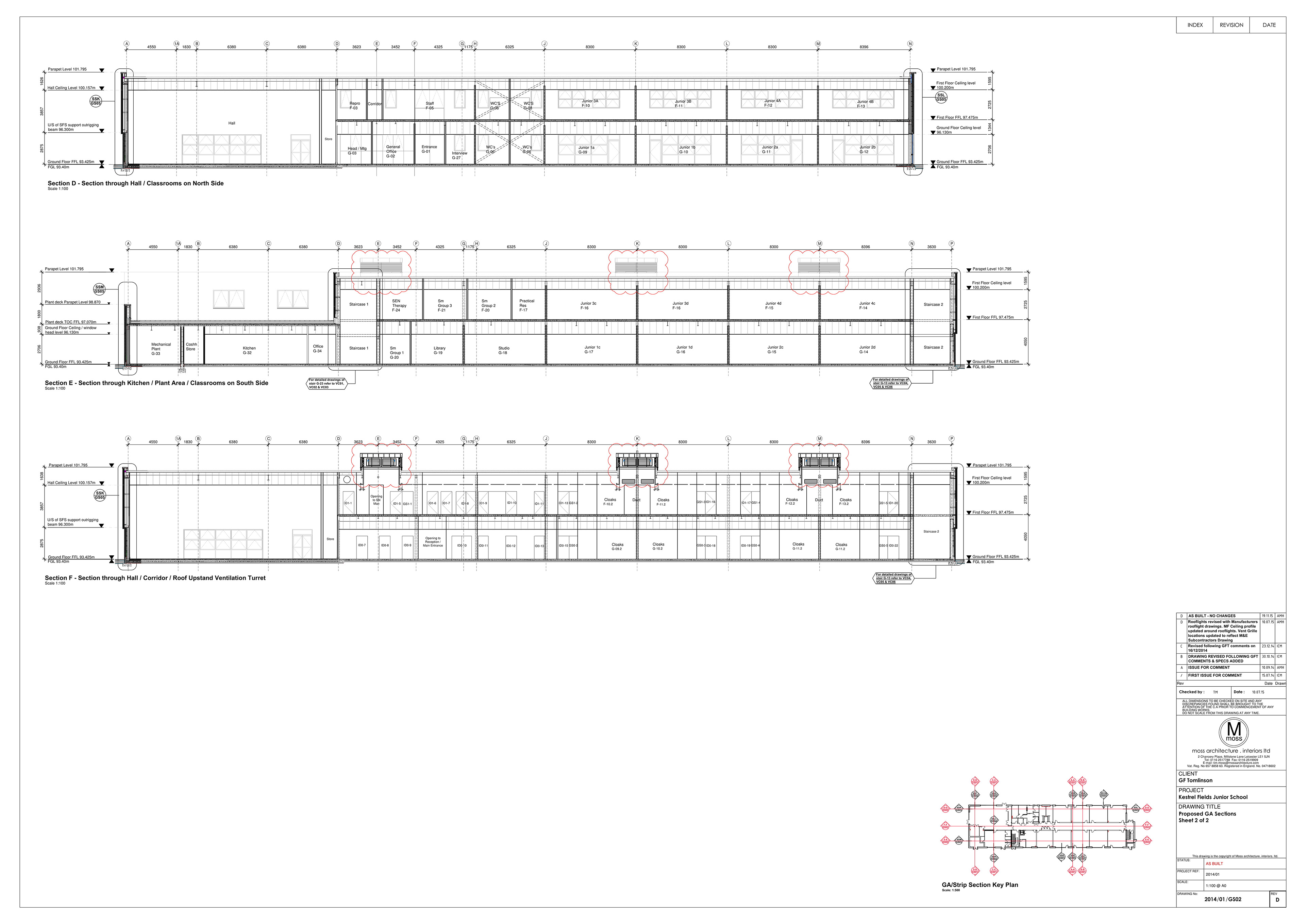

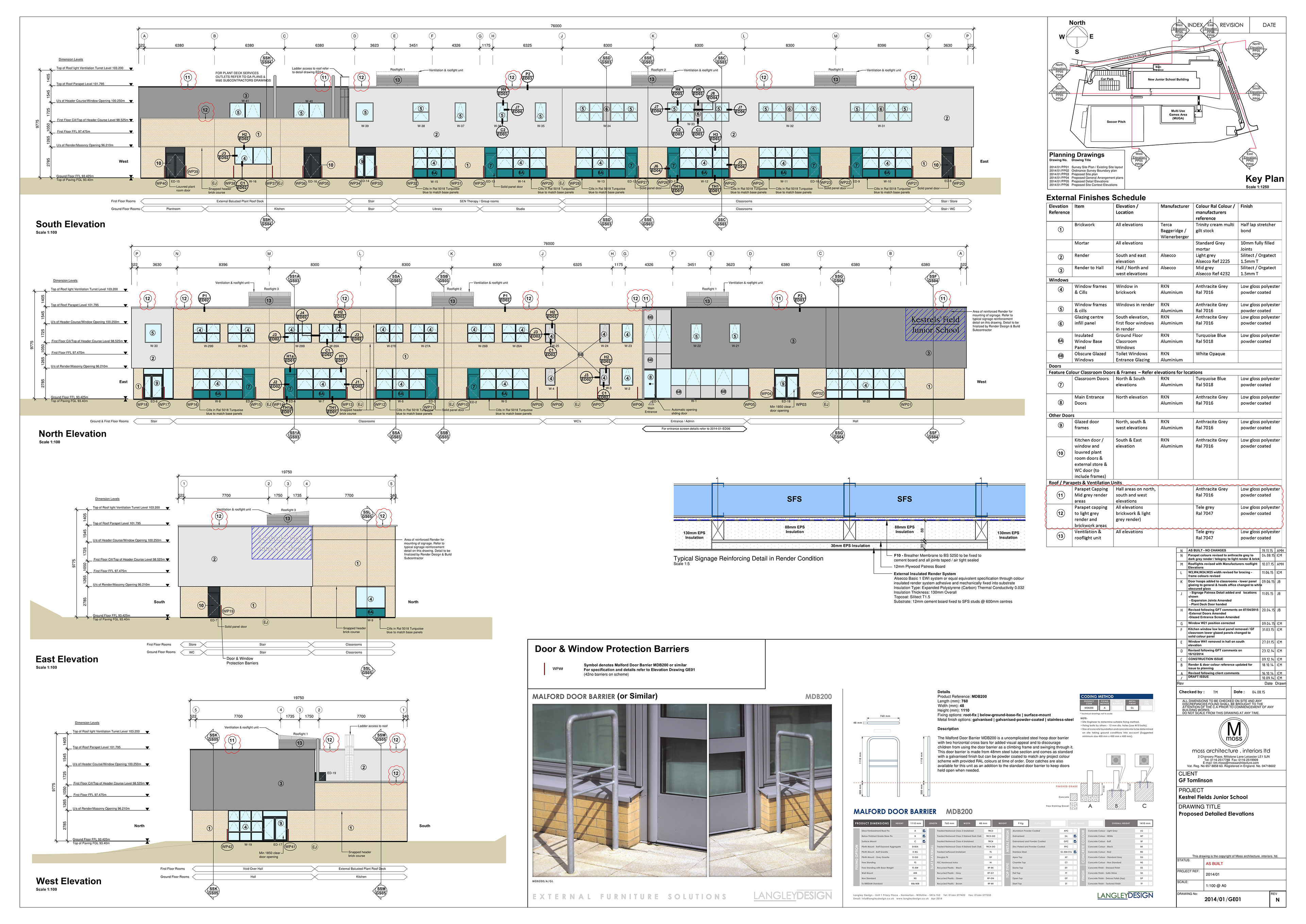
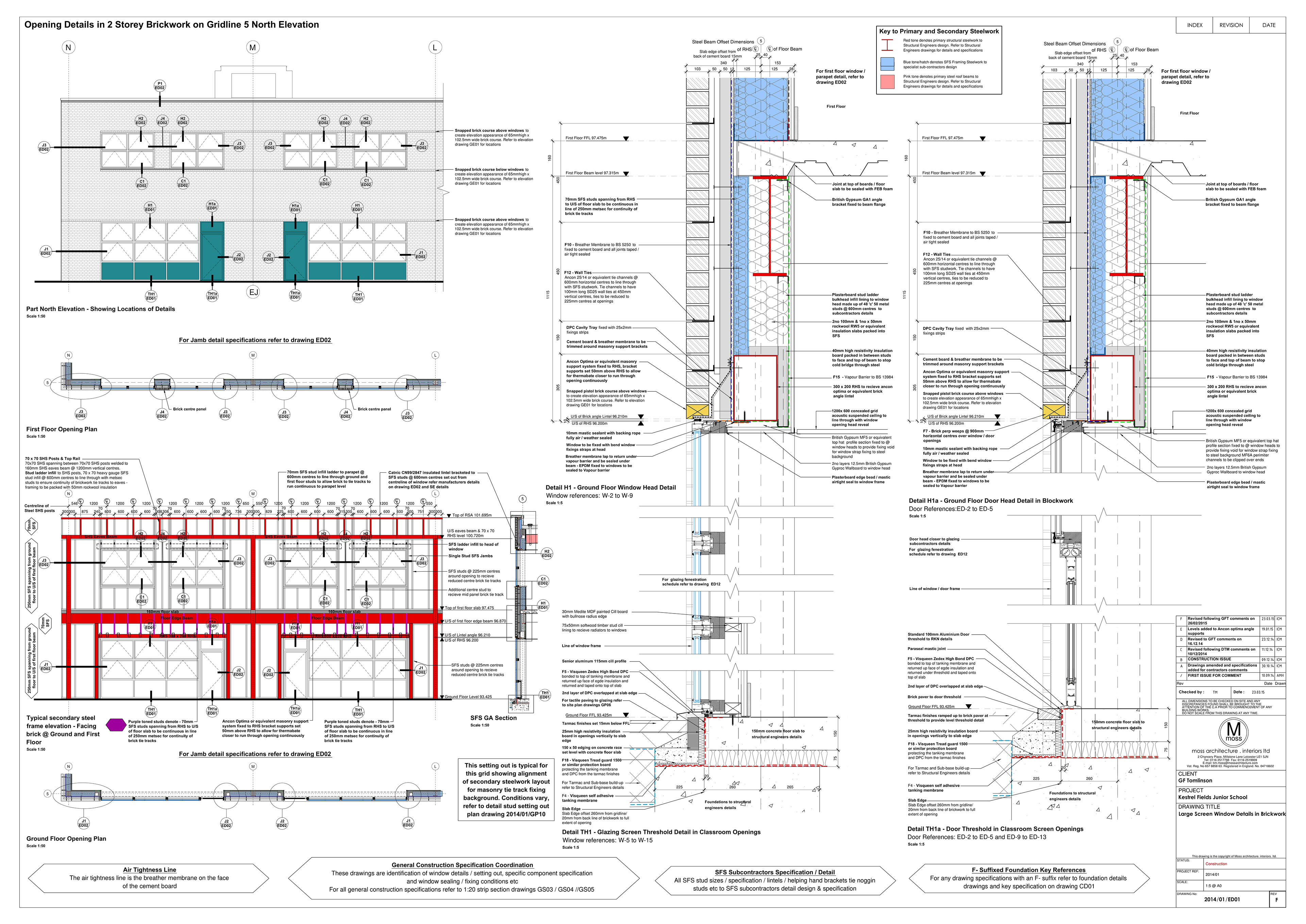

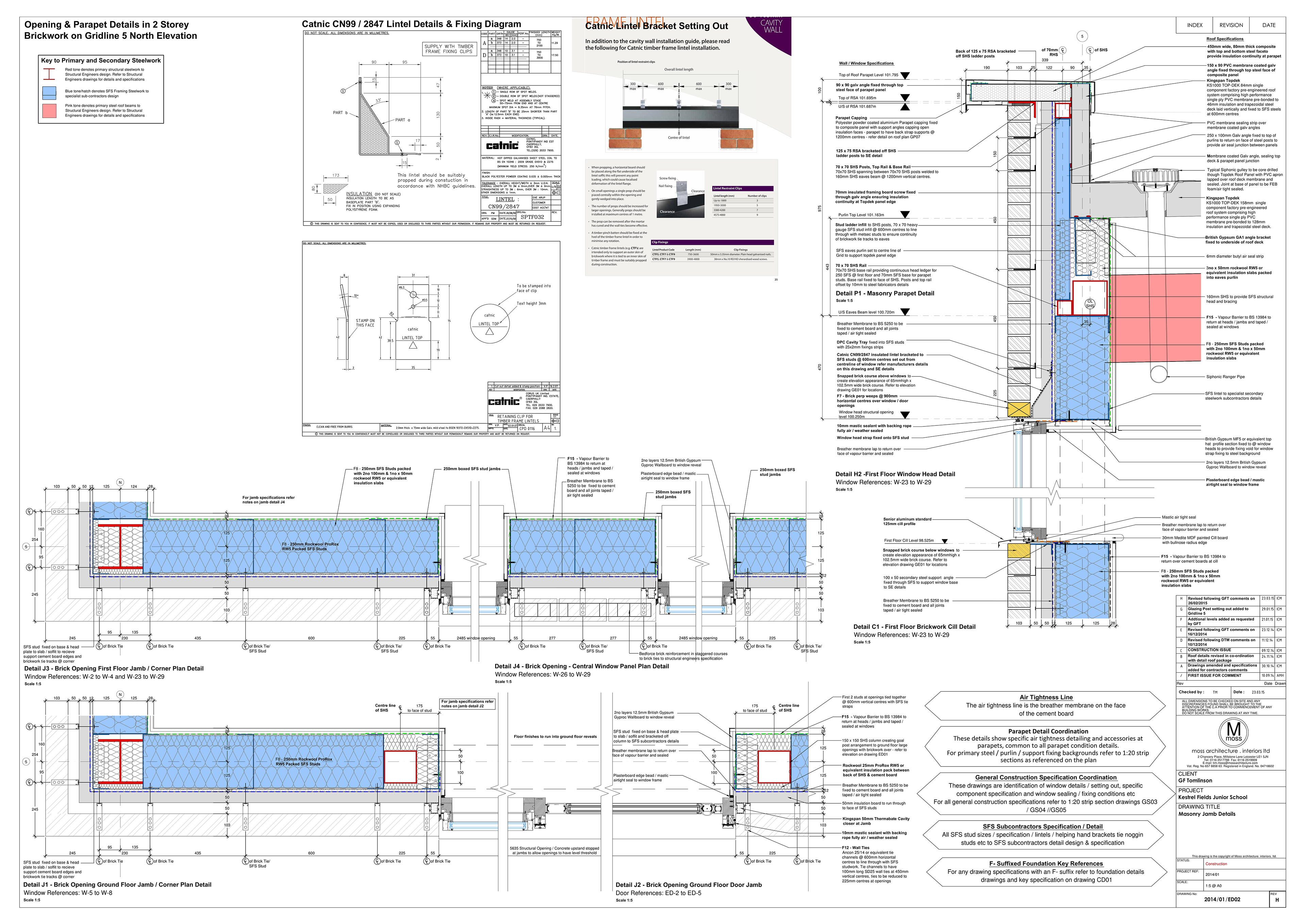
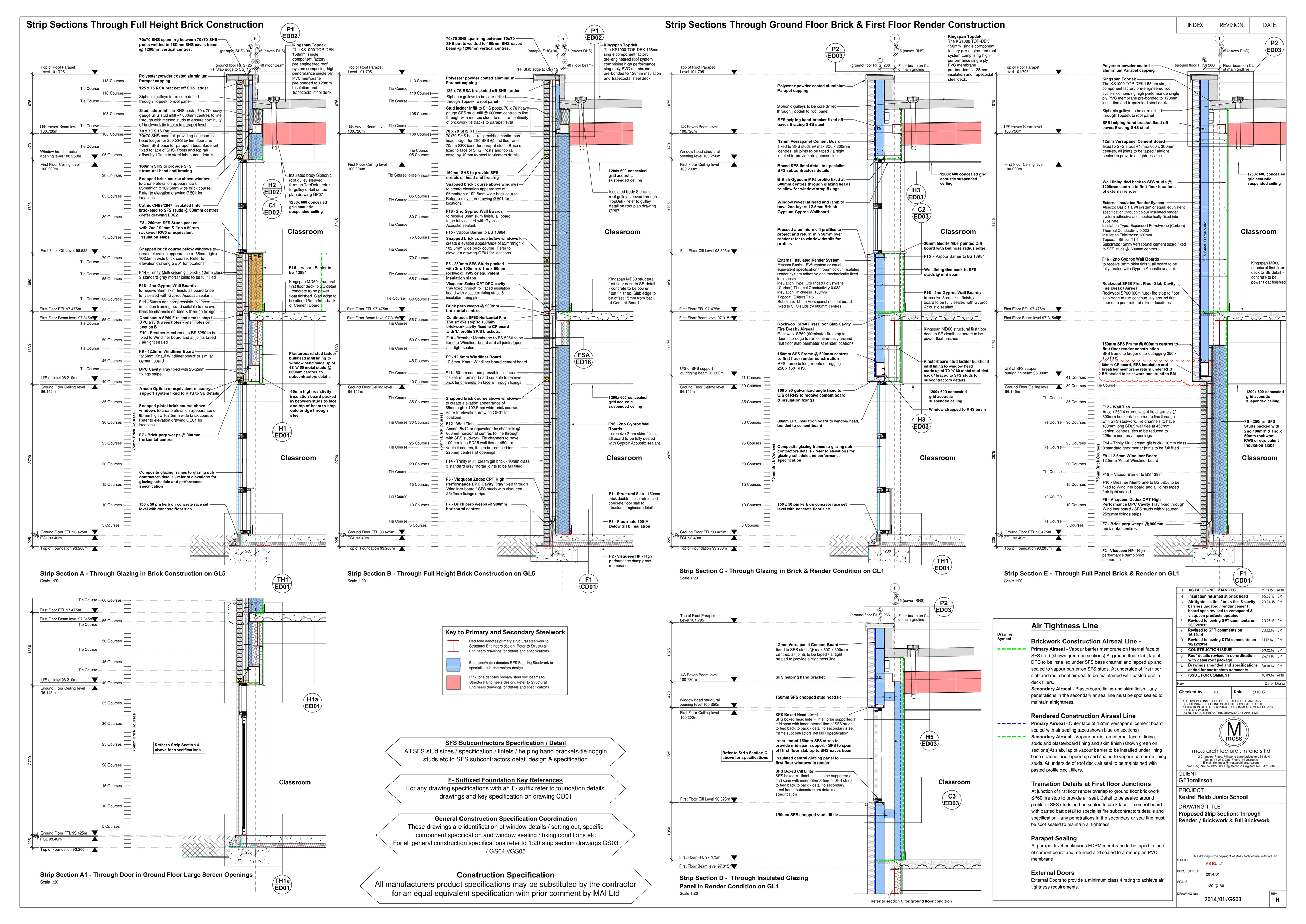

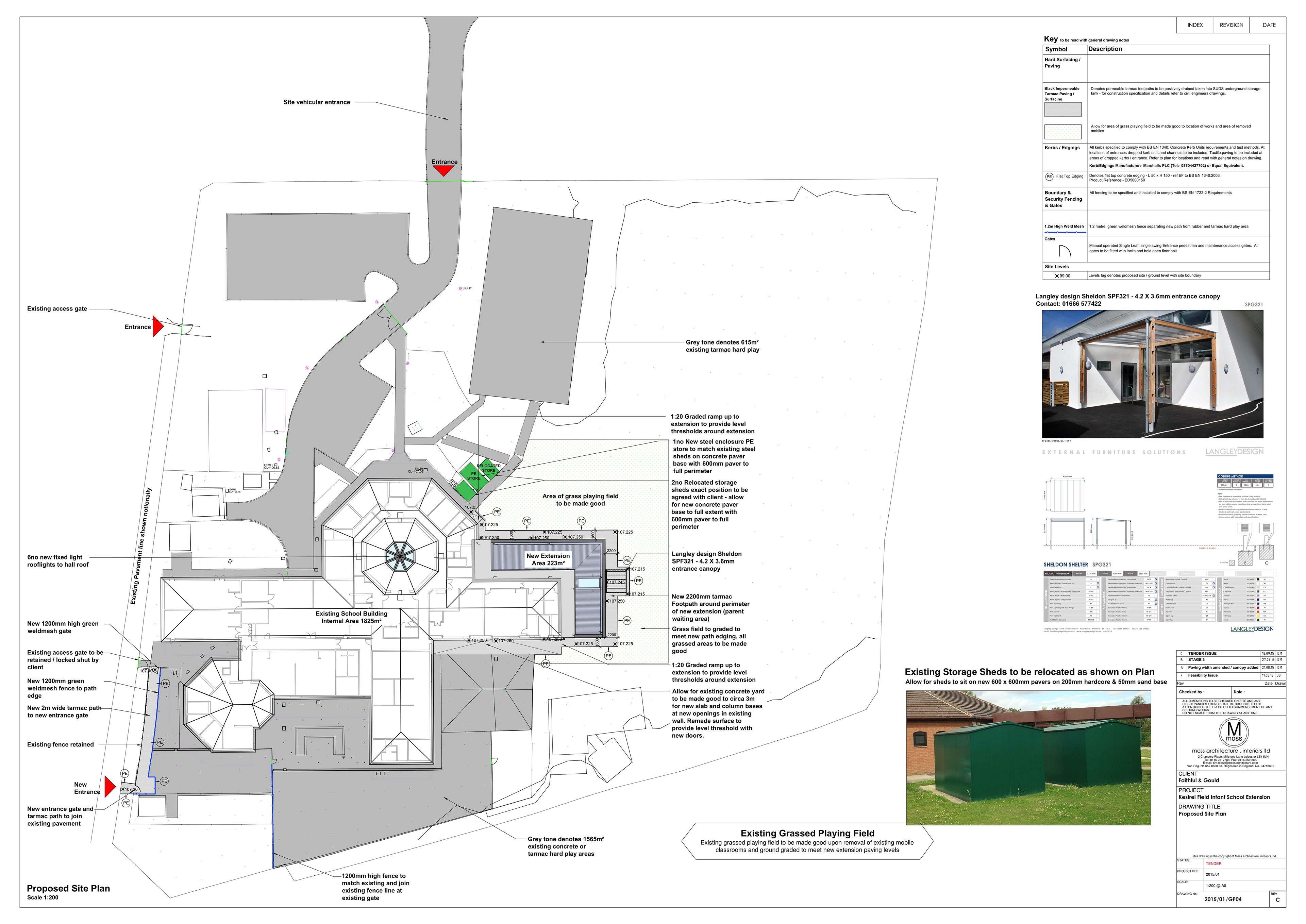
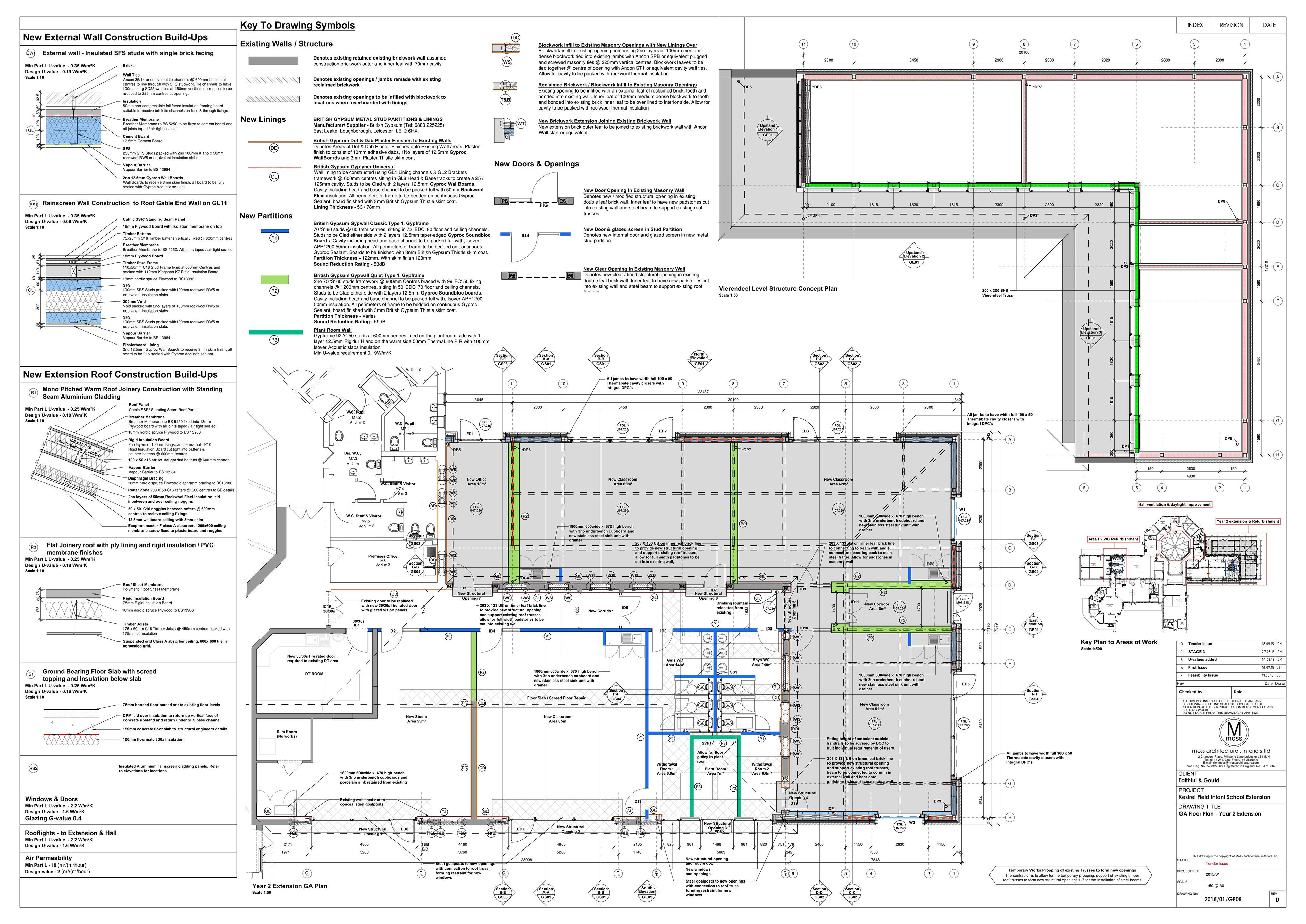
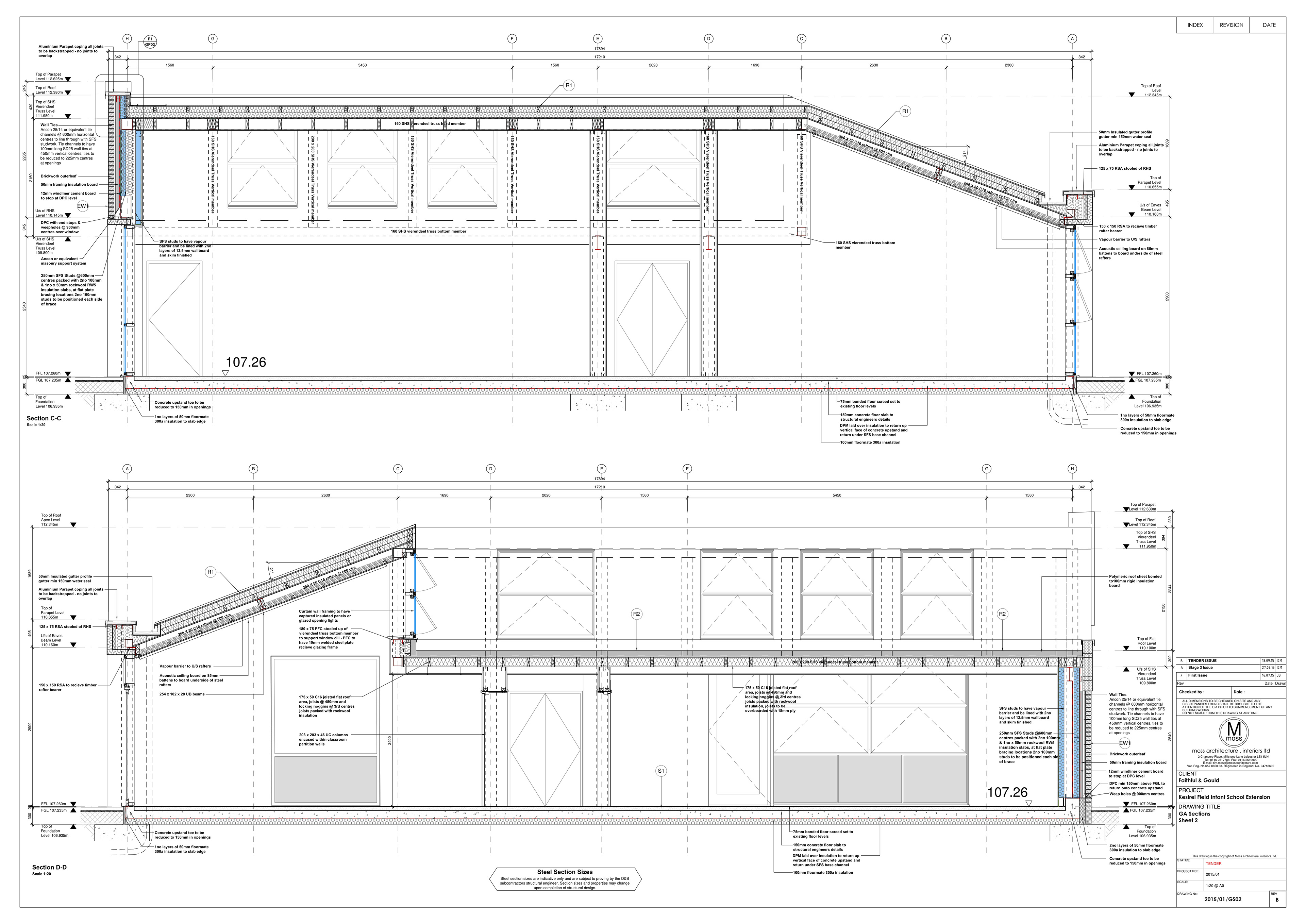

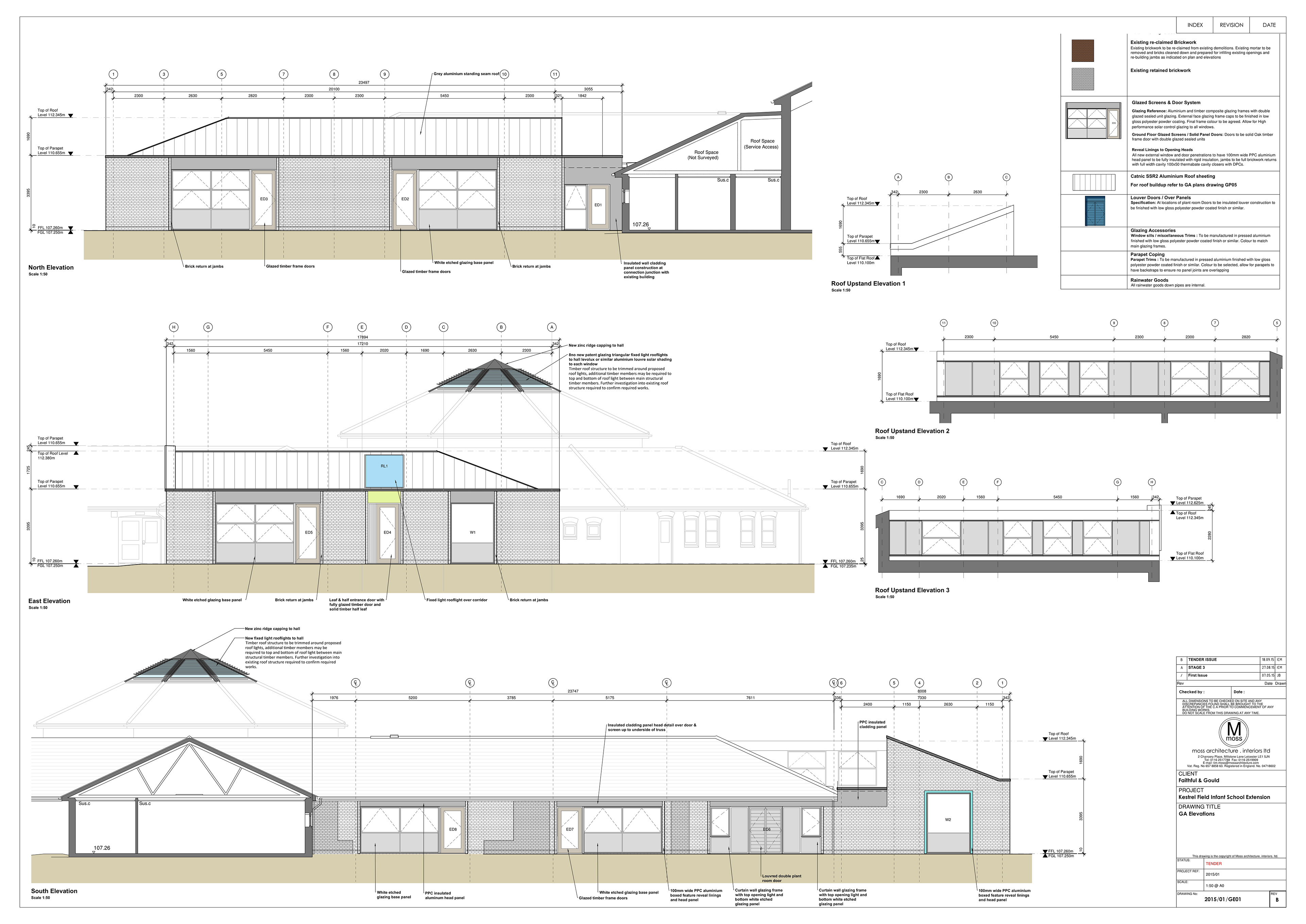
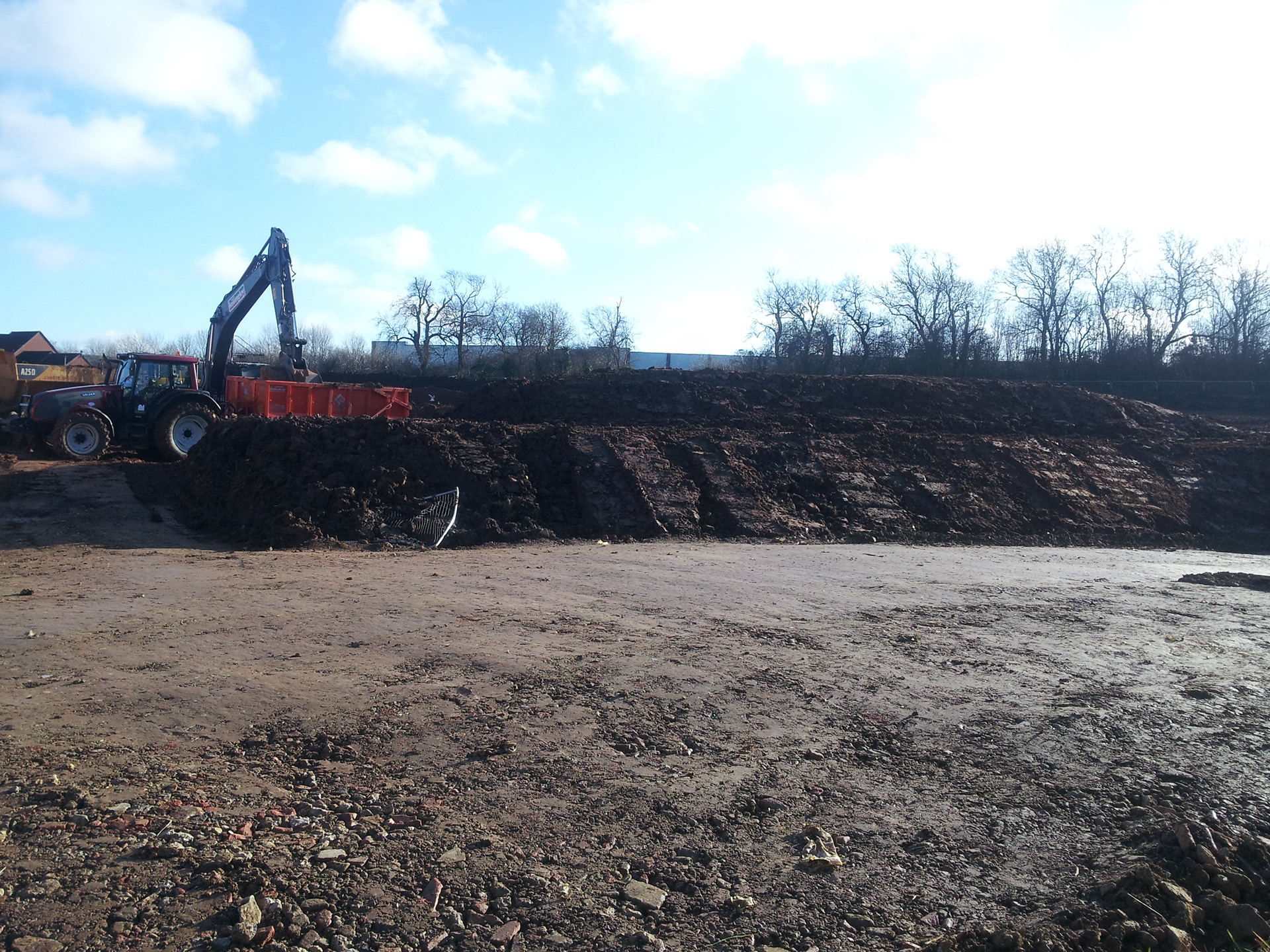
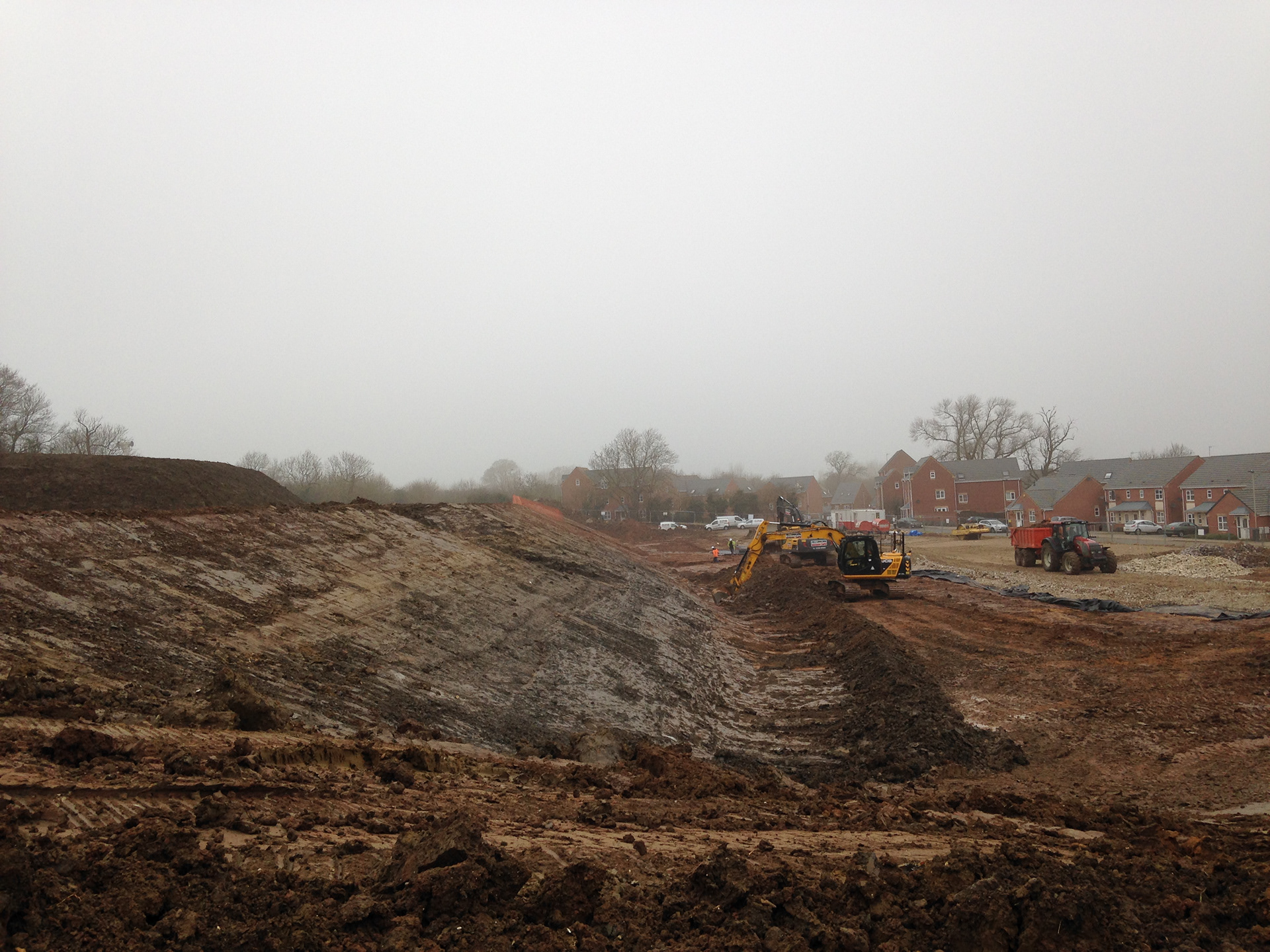


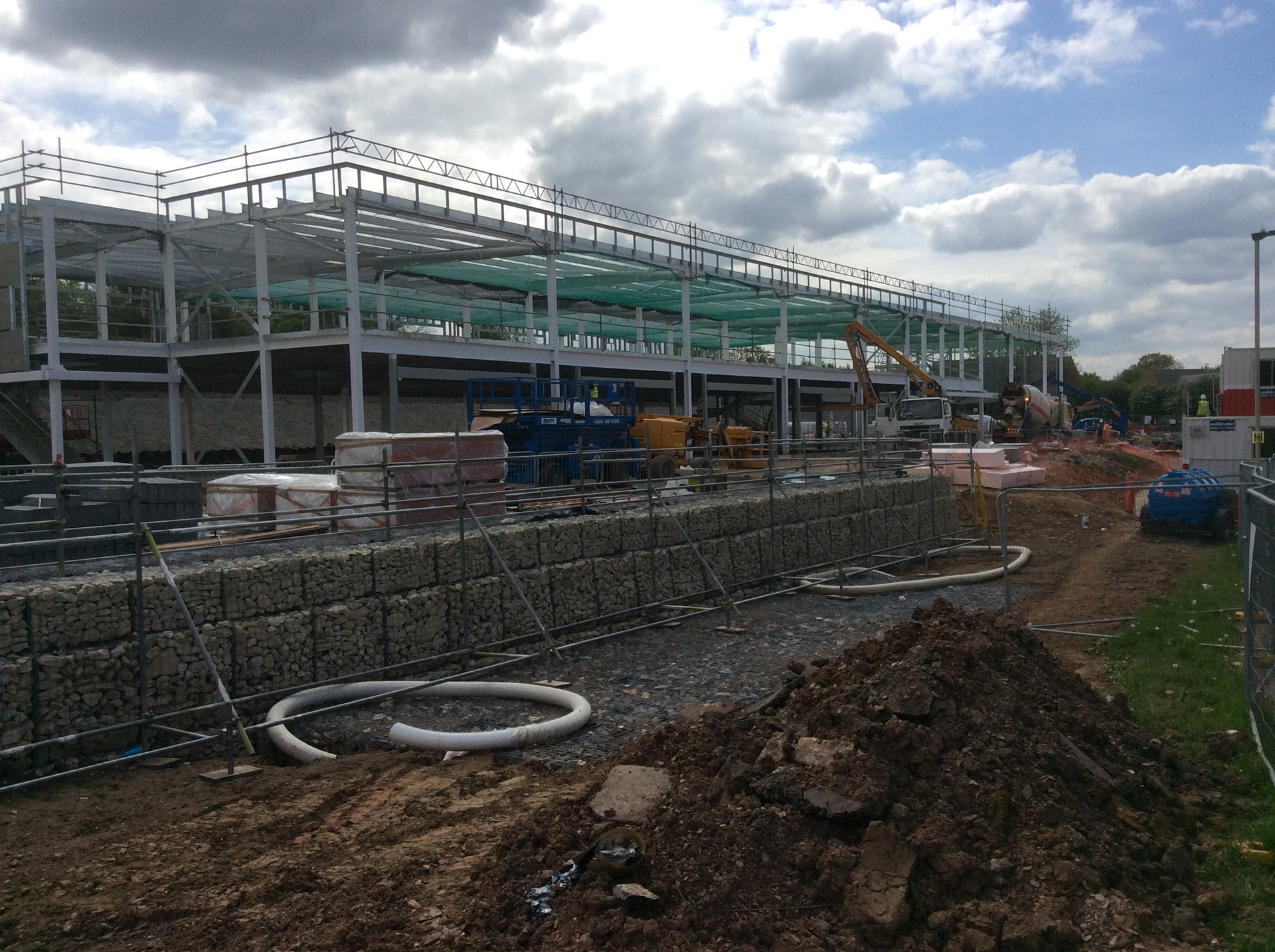
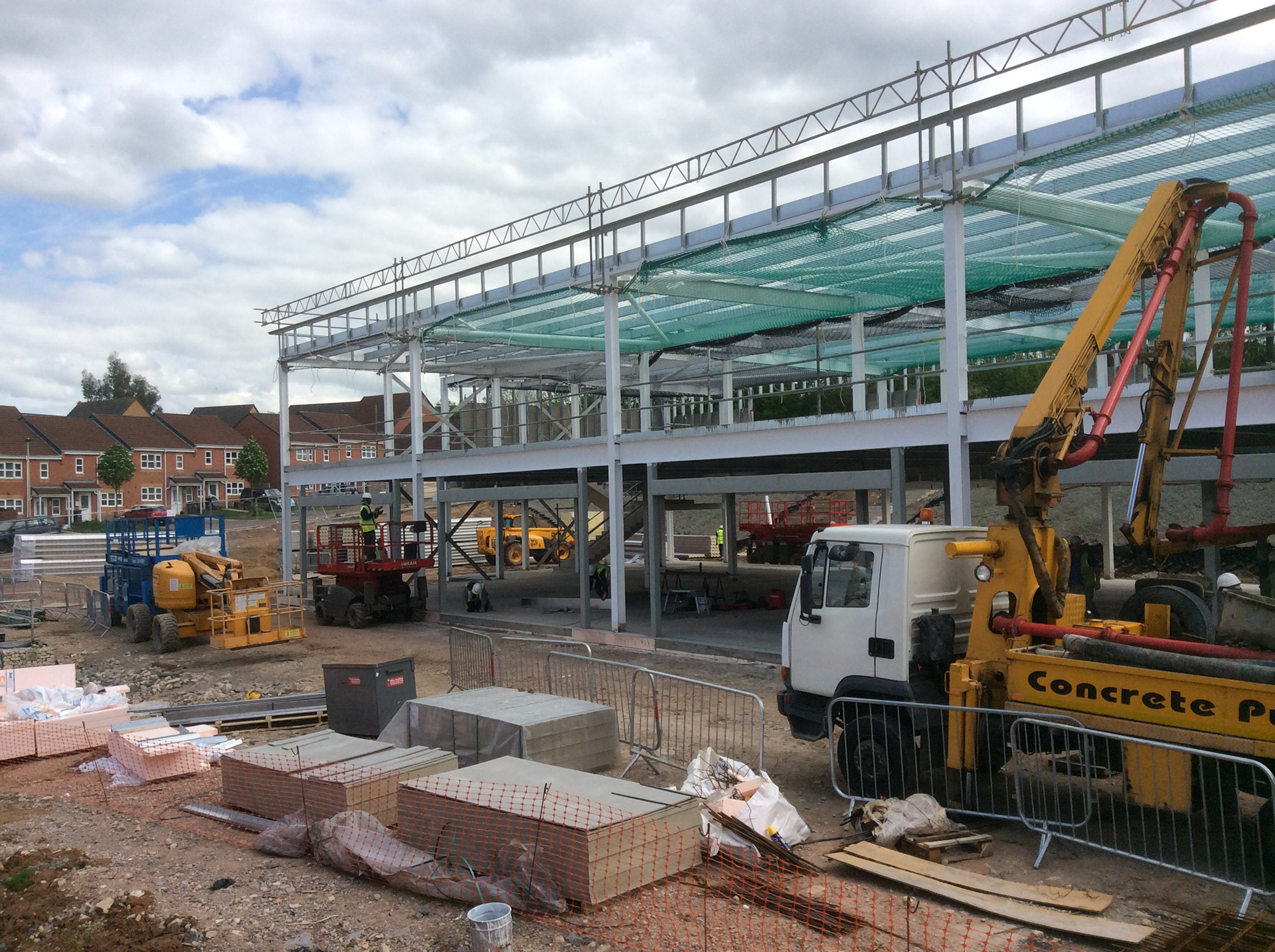
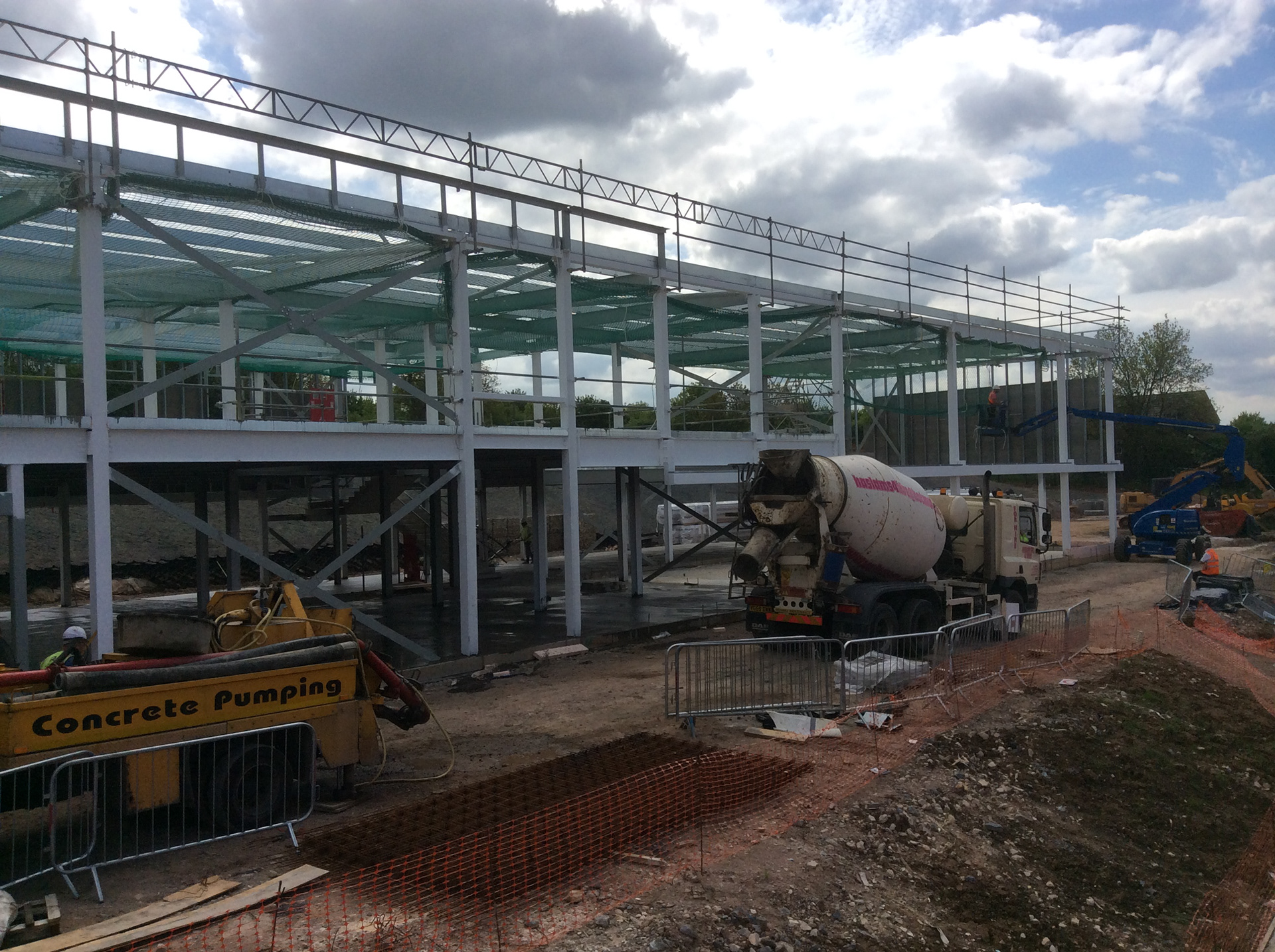

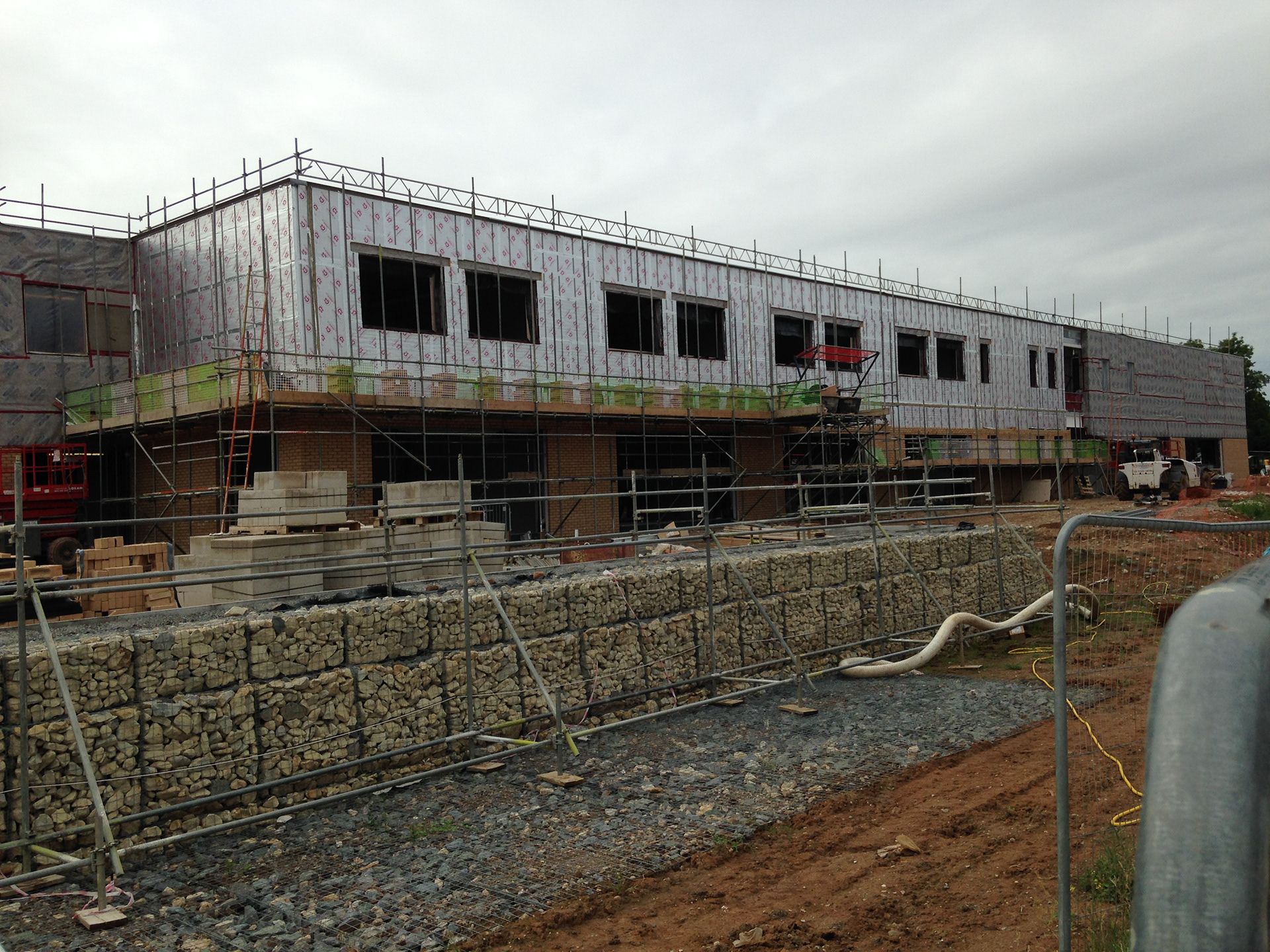
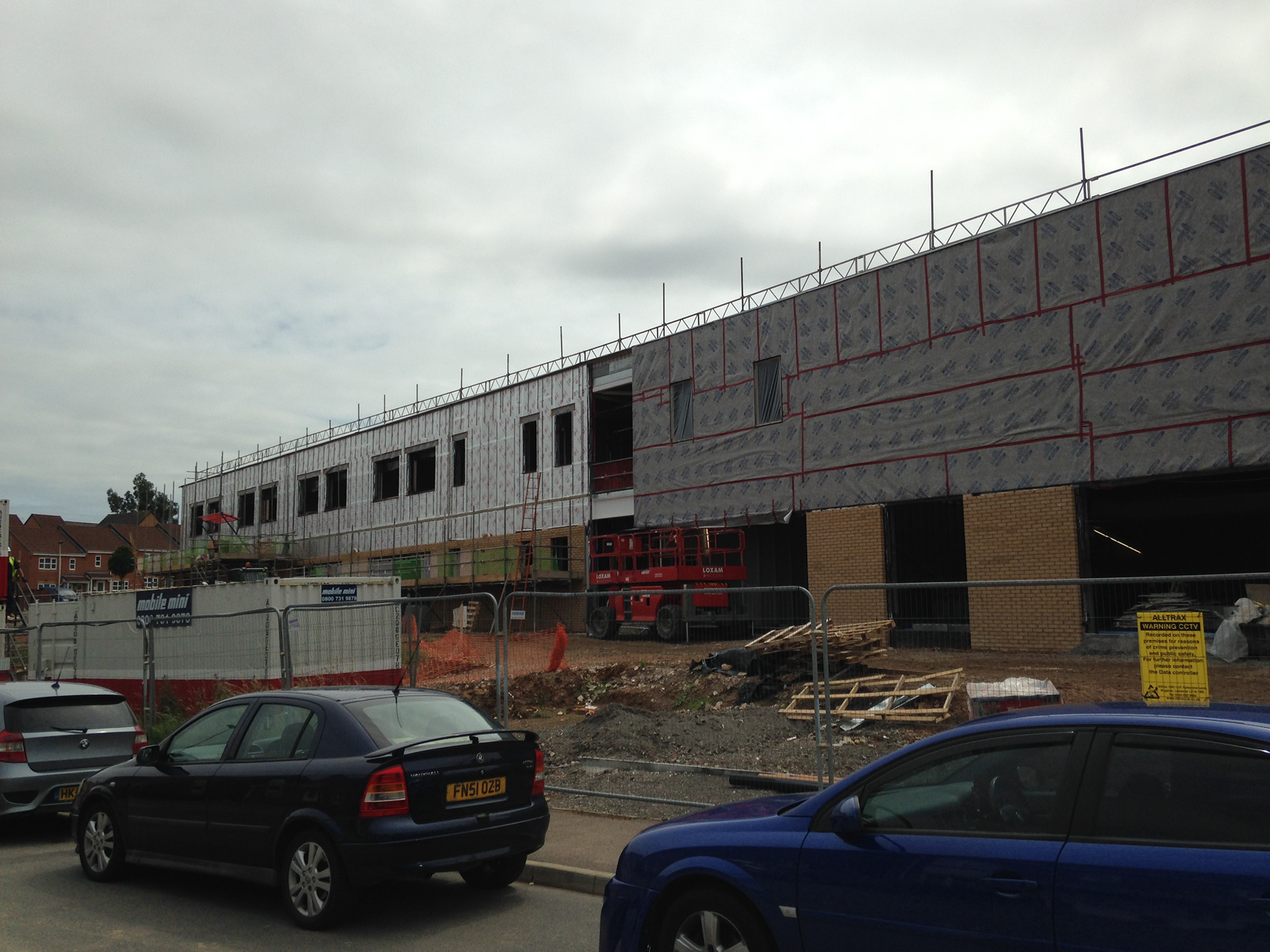
Architecture
The school design required to respond to context, budget, programme, sustainability and appearance. Initial client concepts included pitched roof and continuous roof lantern lights for provision of natural ventilation. Through design review we were able to save 1/3rd of the built volume through providing a flat roof design and developing roof turret style ventilator solutions to the natural ventilation stacks. Through this we improved the diversity of ventilation with four sided louvers. That included roof lights to the top. This proposal simplified construction reducing programme and cost. The school building massing was much reduced considering the residential street scale resulting in support by the local residents. The impact of the photovoltaic panel arrays were also reduced and are not visible on the built scheme. The school was designed to consider sustainability by introducing technologies such as super-insulation, SUDS drainage and natural ventilation and photovoltaic solar panel roof arrays.
Each class room is served with a large window with actuated vents maximising natural light and fresh air into class rooms. Central air ducts are provided to the corridor walls that rise to roof level and connect the classrooms to the actuated passive ventilation units that are roof mounted . The vent units are top glazed to act as roof lights delivering corridor daylight. Each class room has a CO2, temperature and humidity sensor with a traffic light signal showing air quality from green , good to red , poor. The ventilation operates through teacher switch activation on a room by room basis.
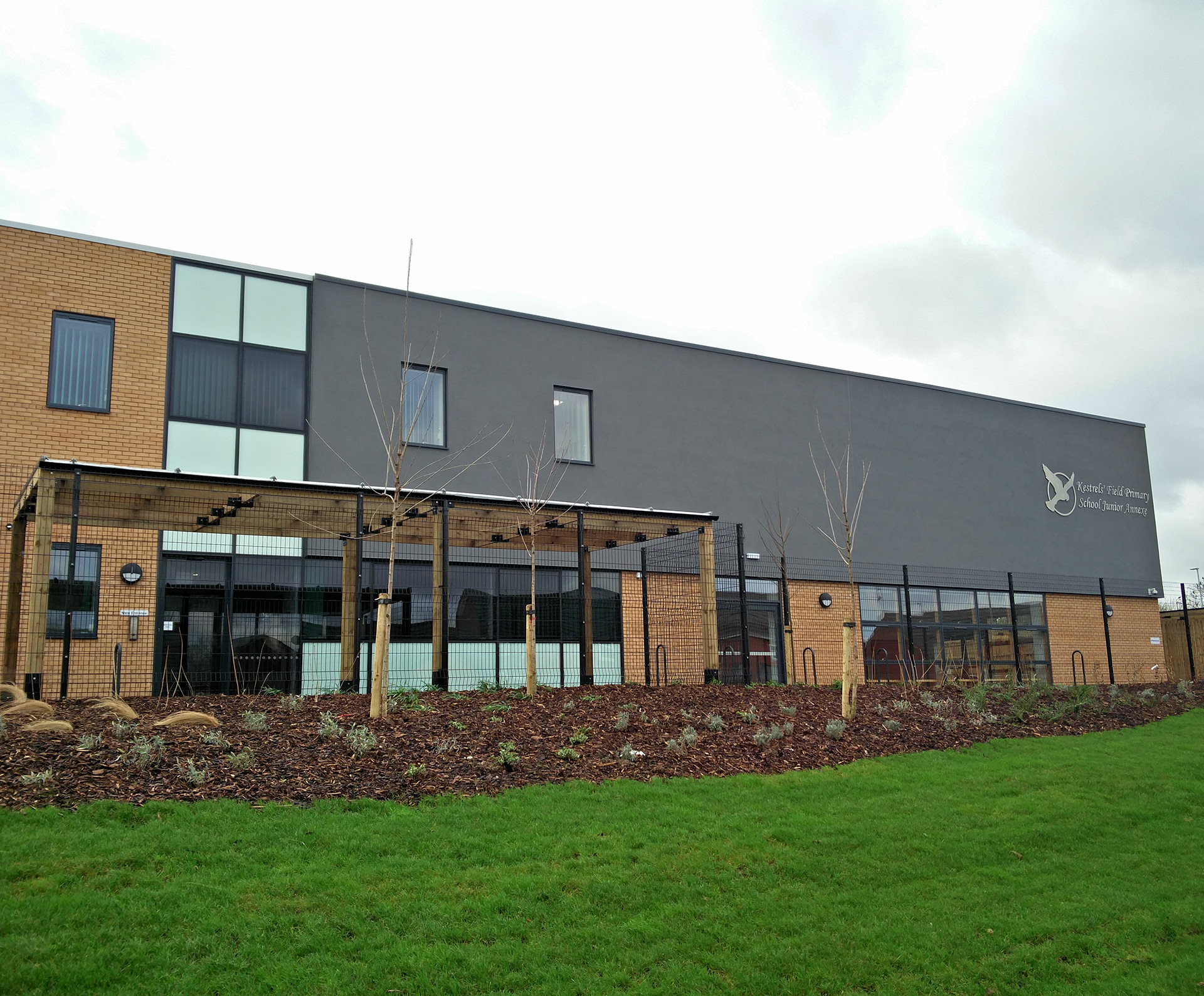
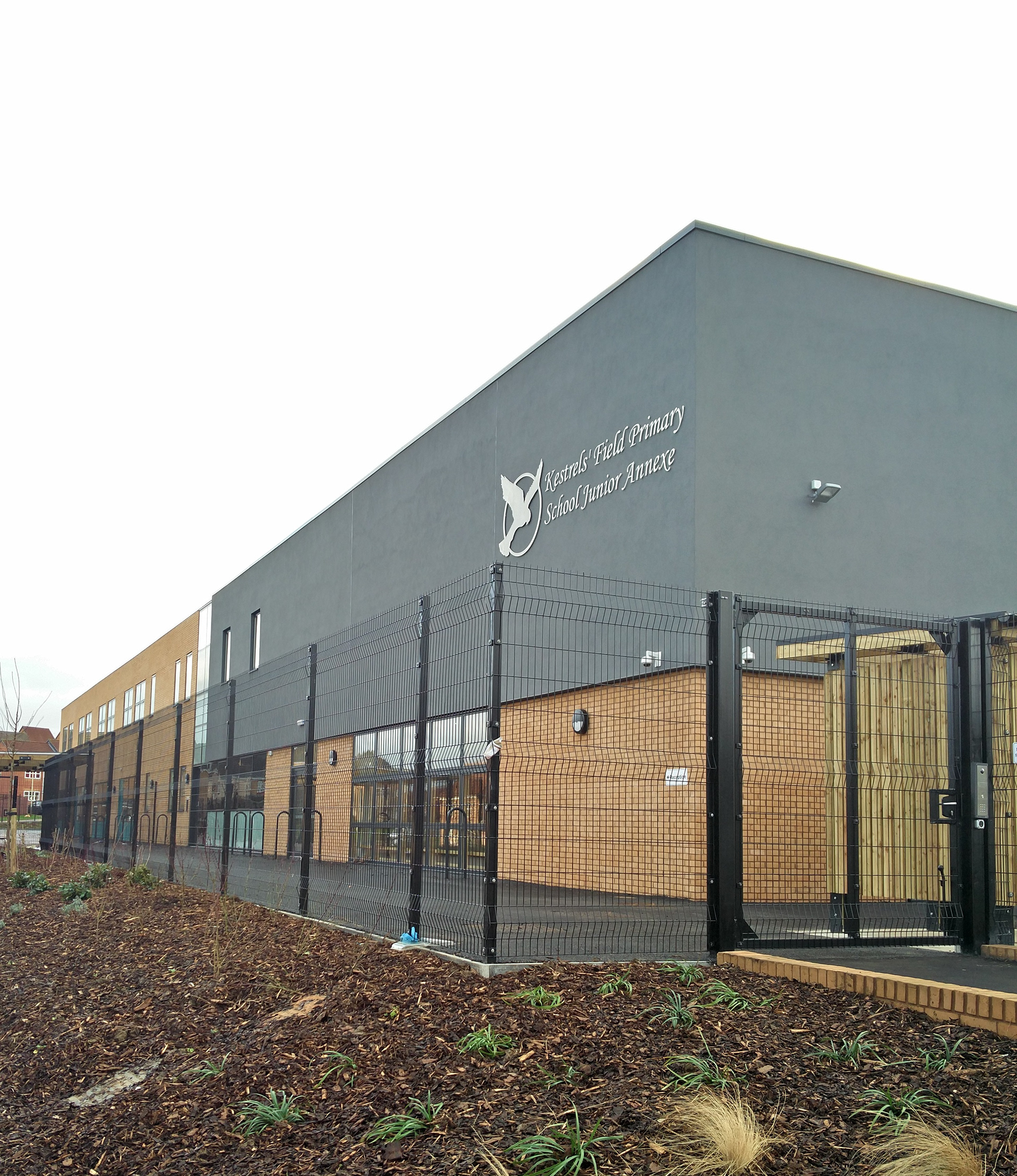


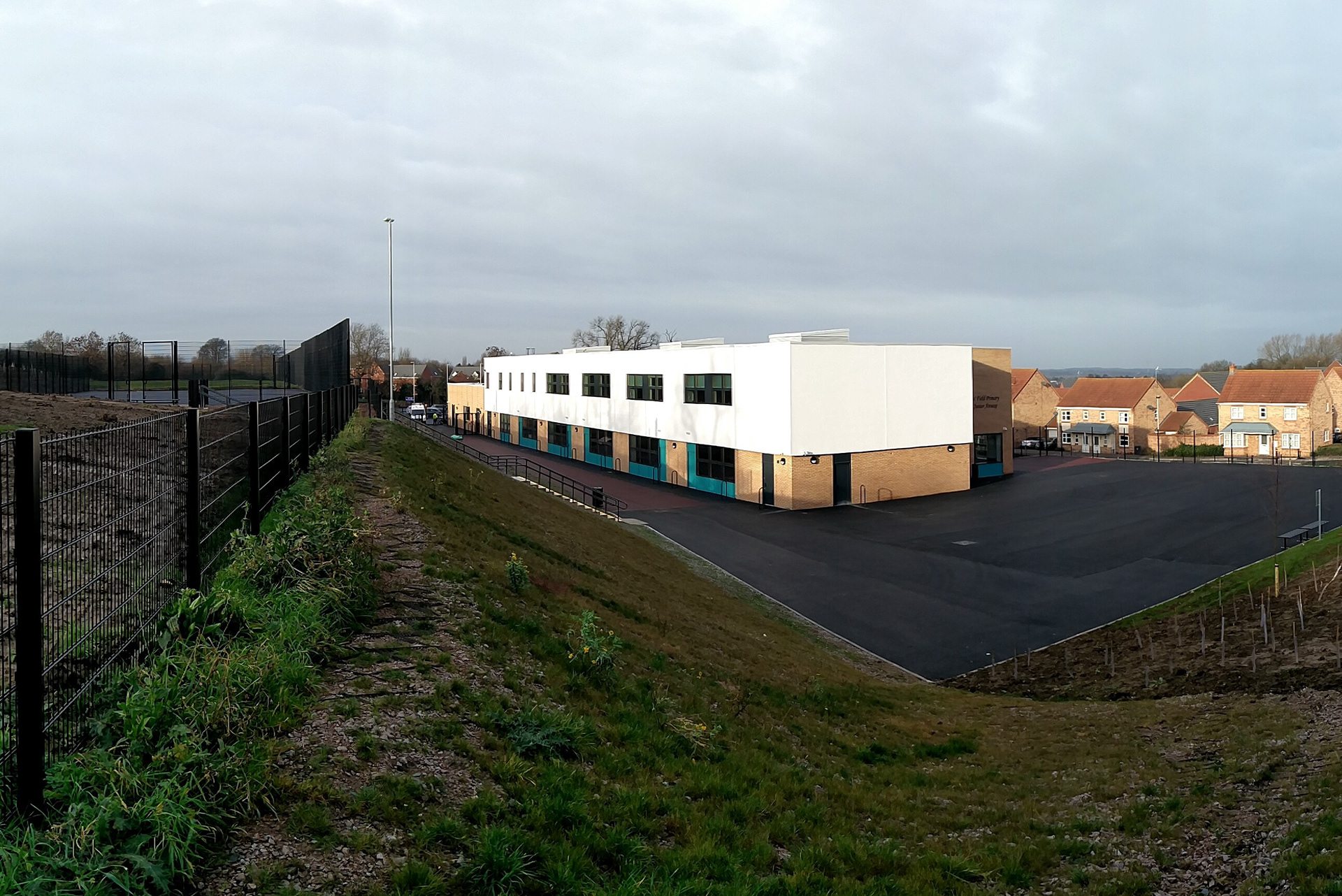
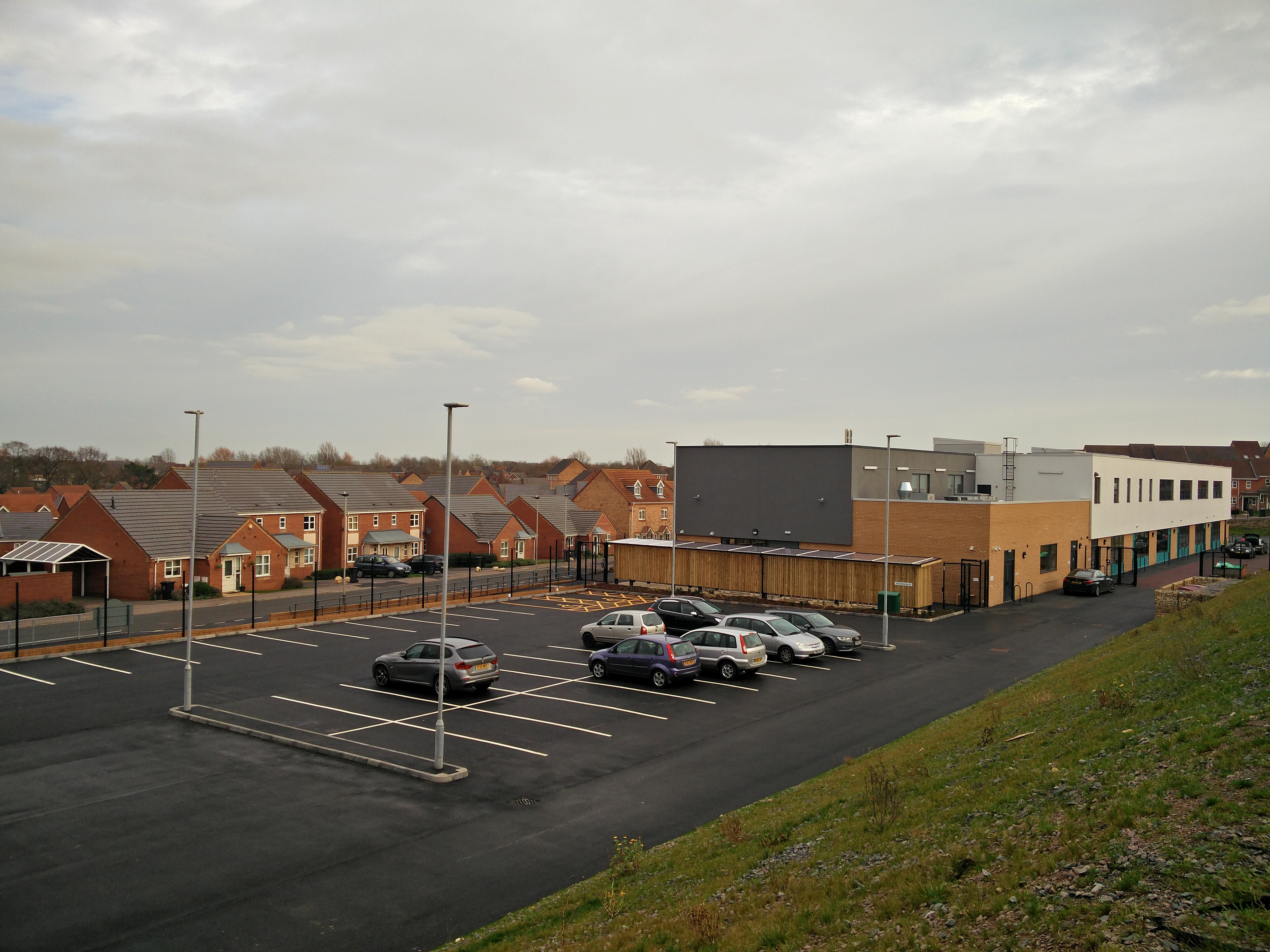
Interior
